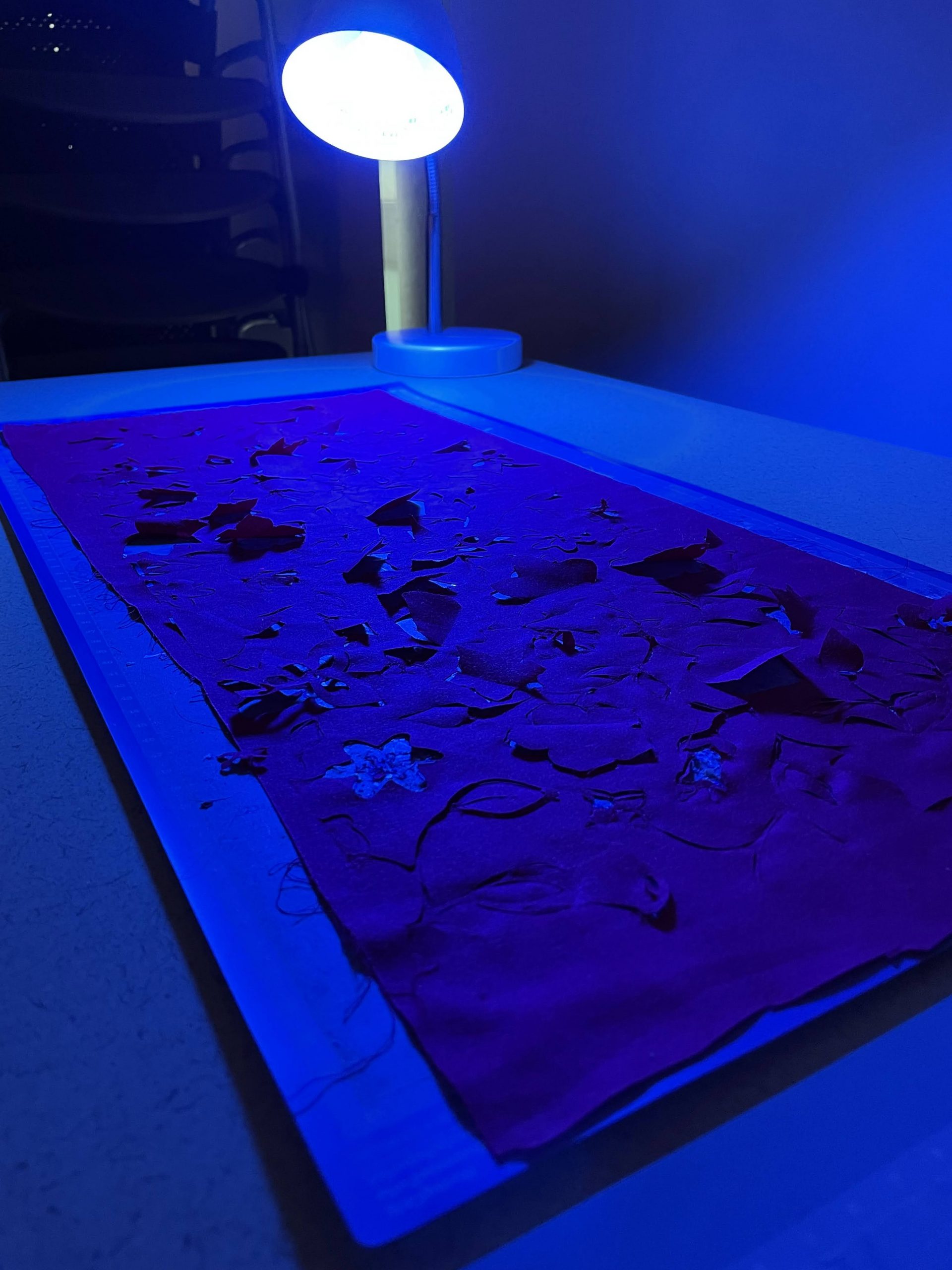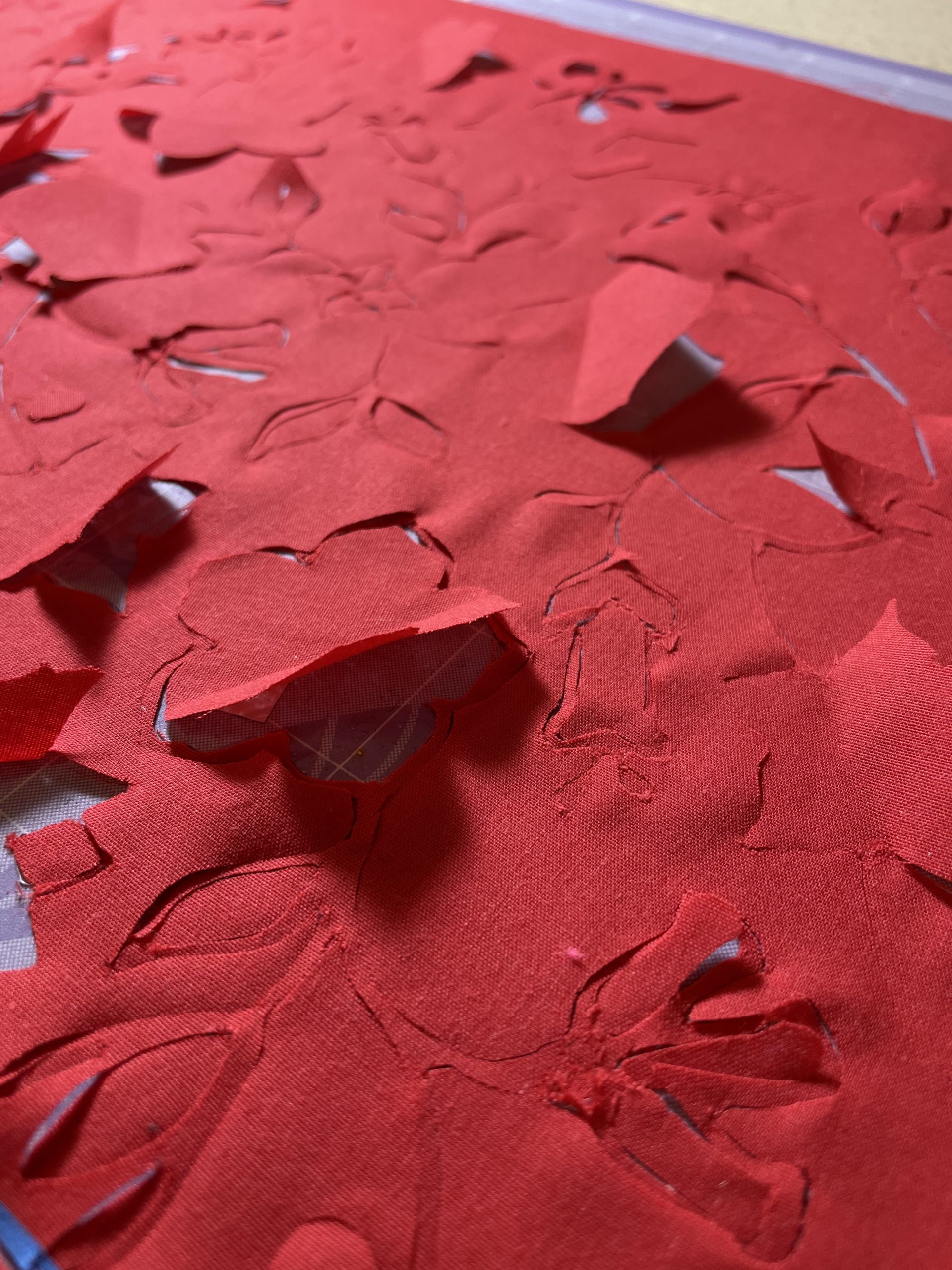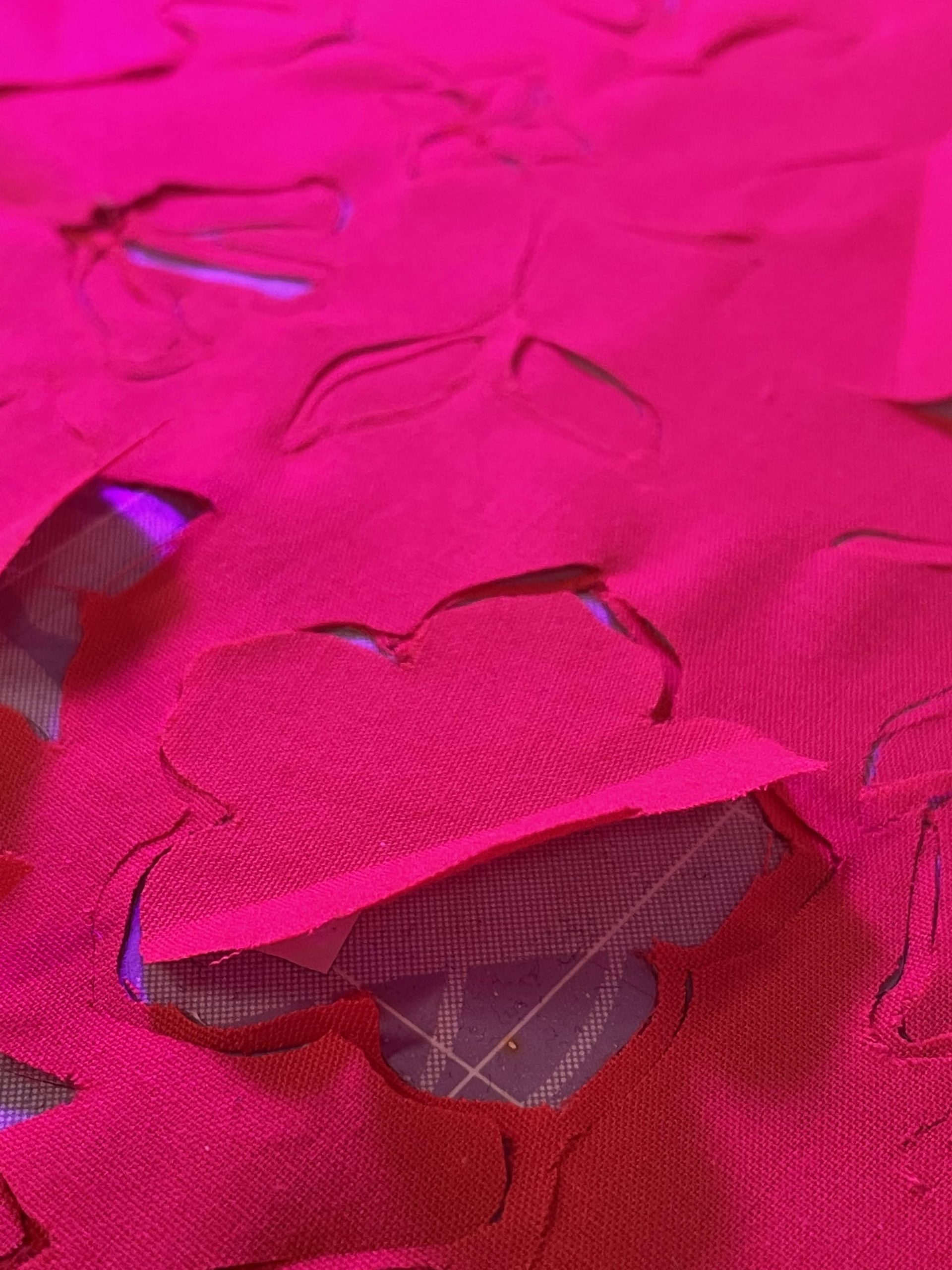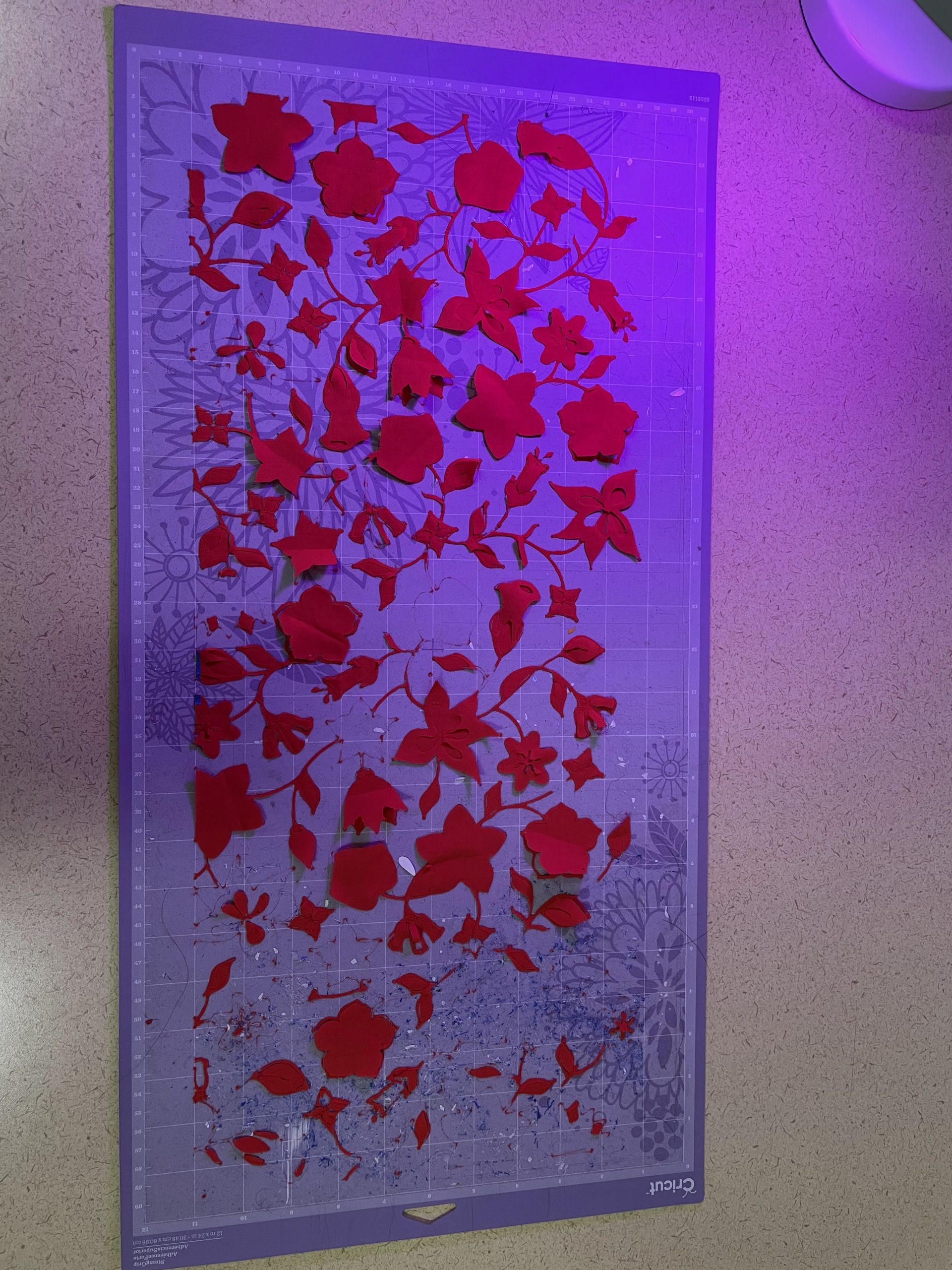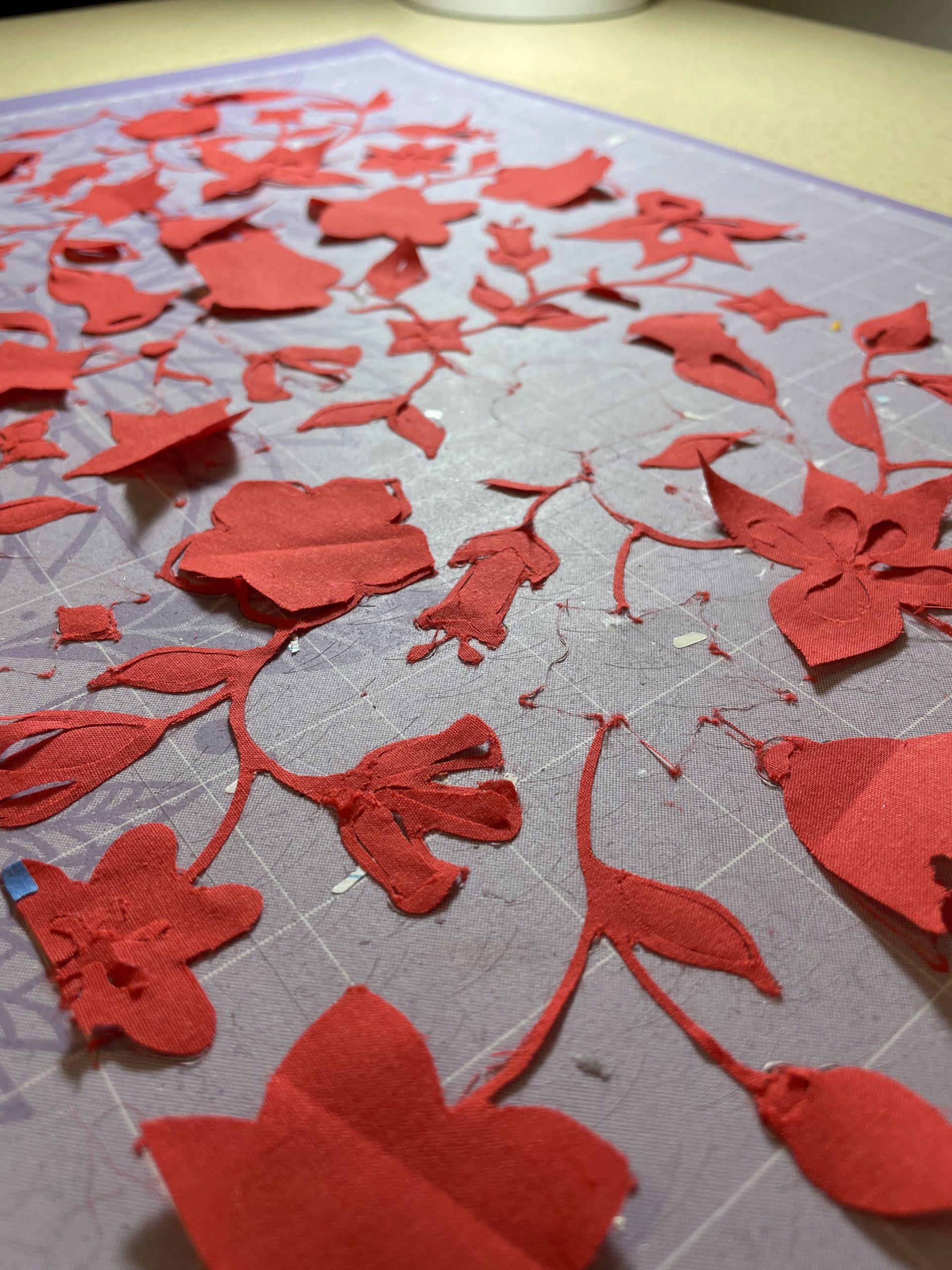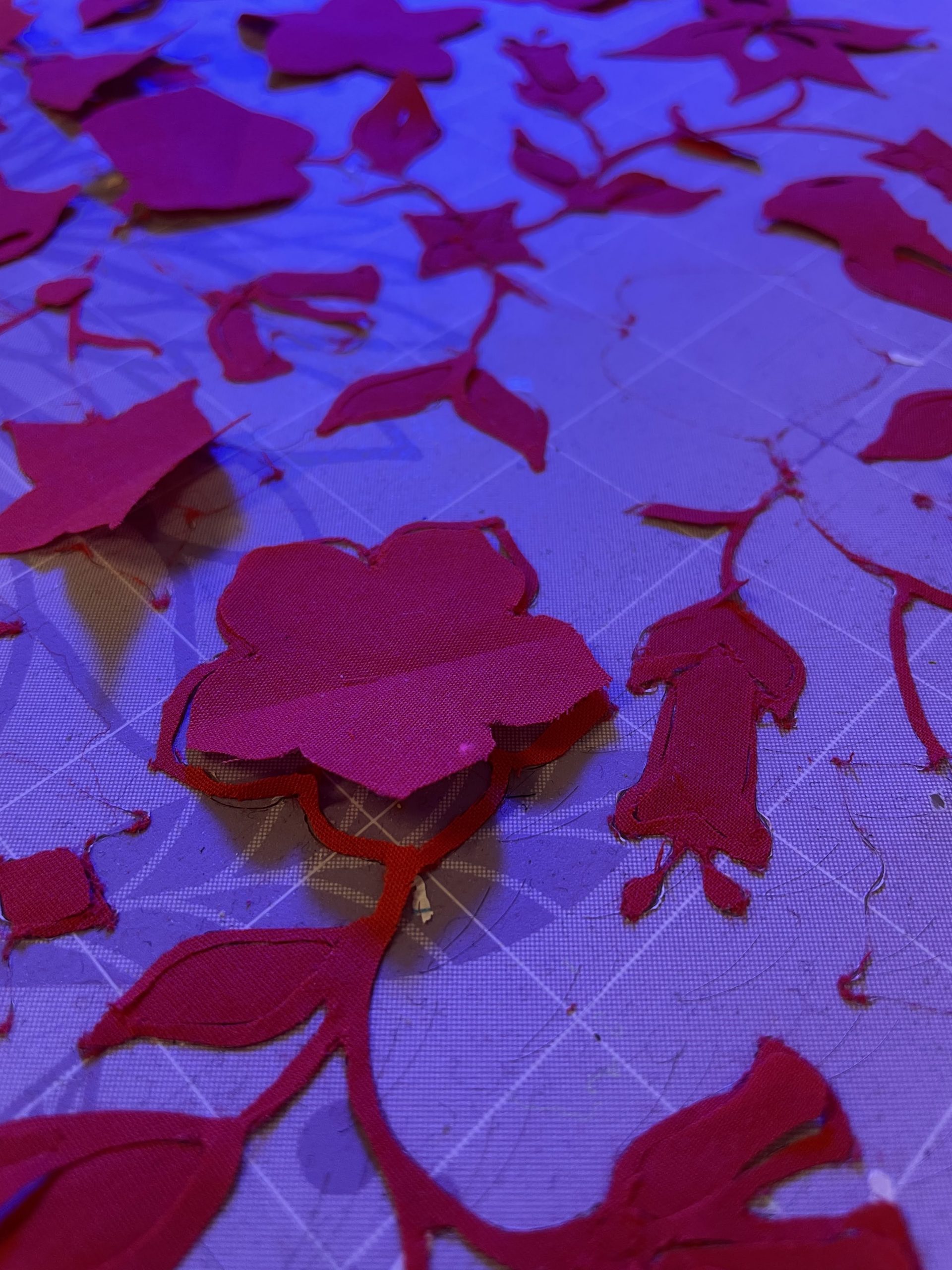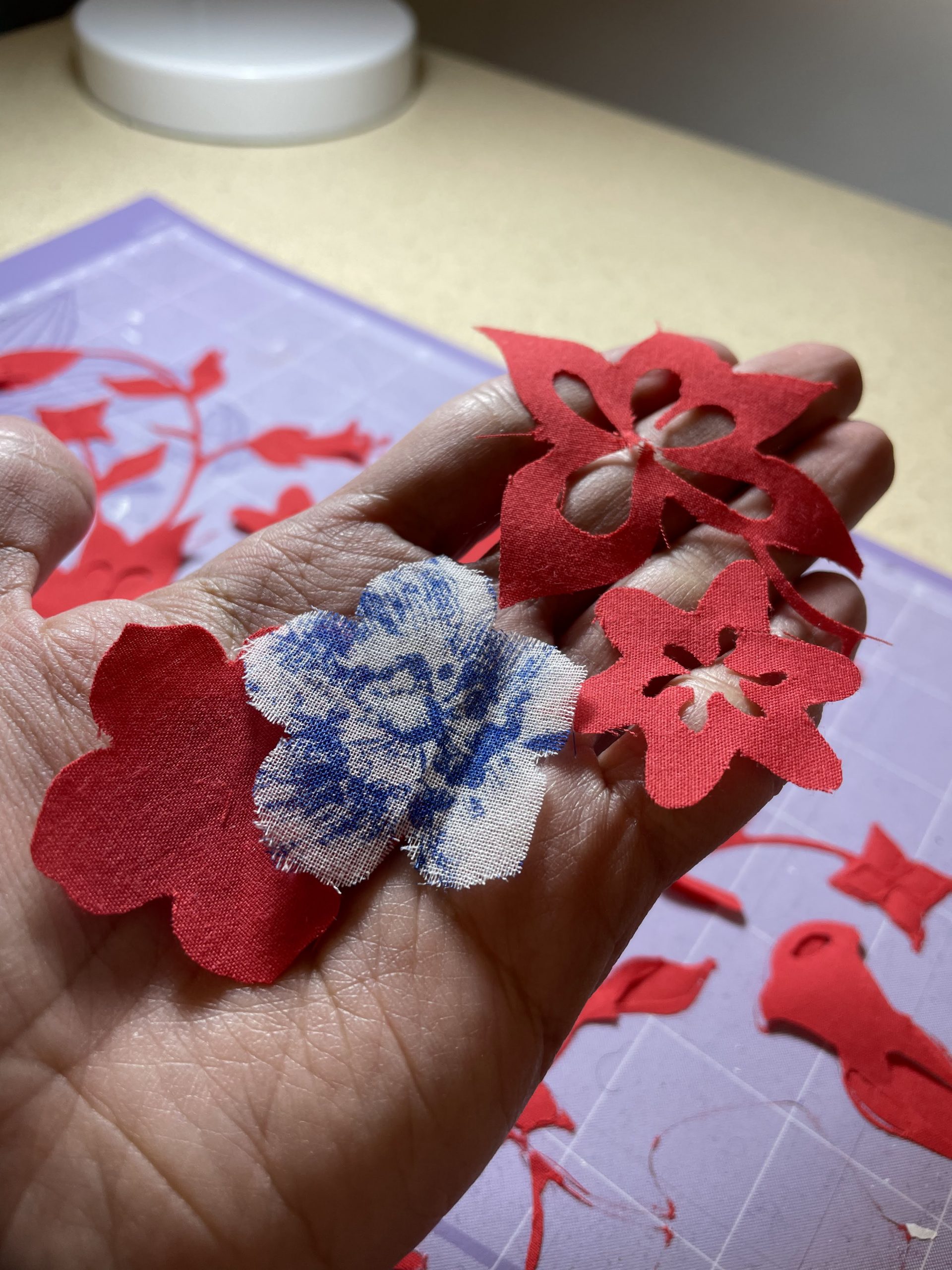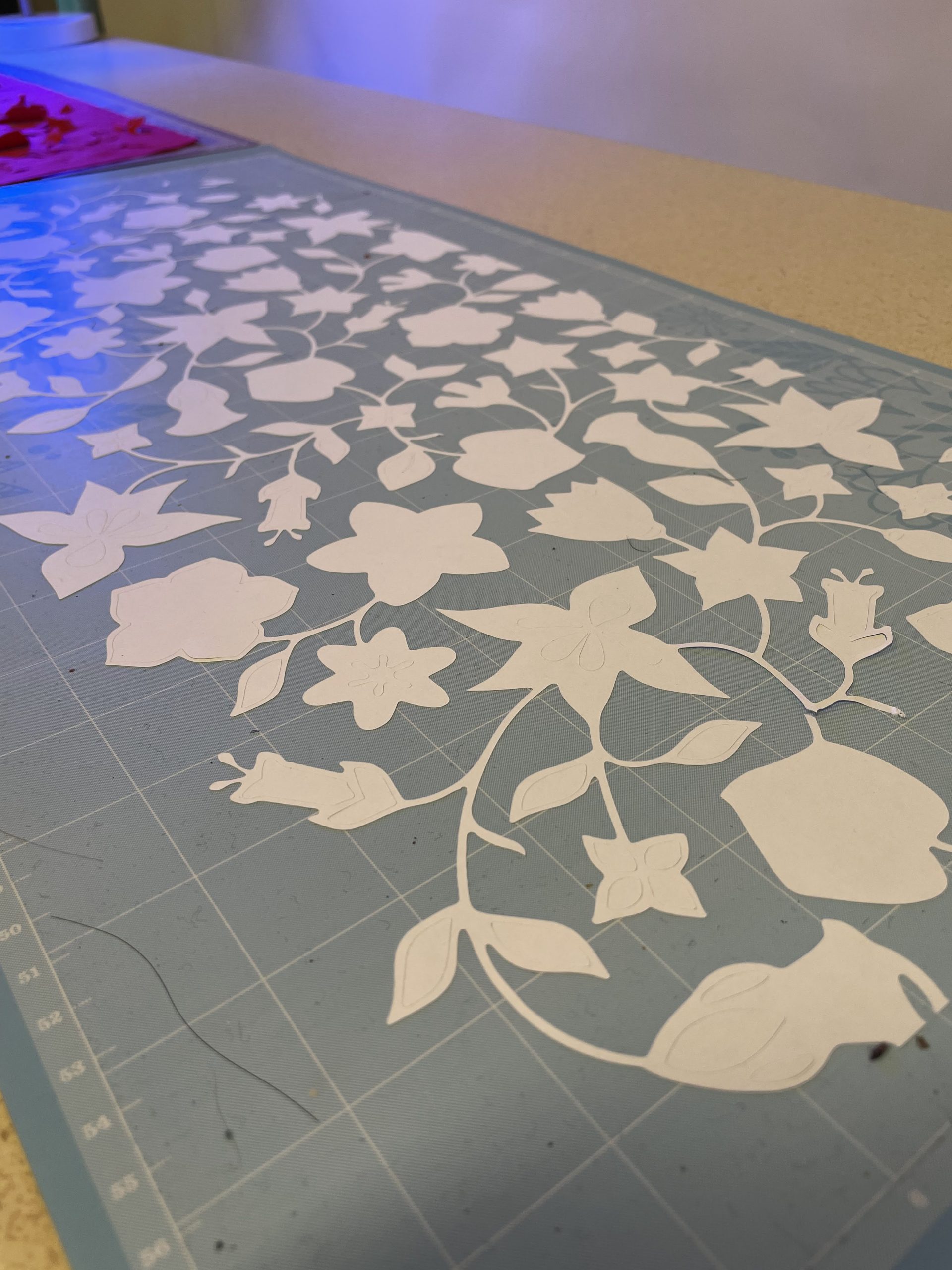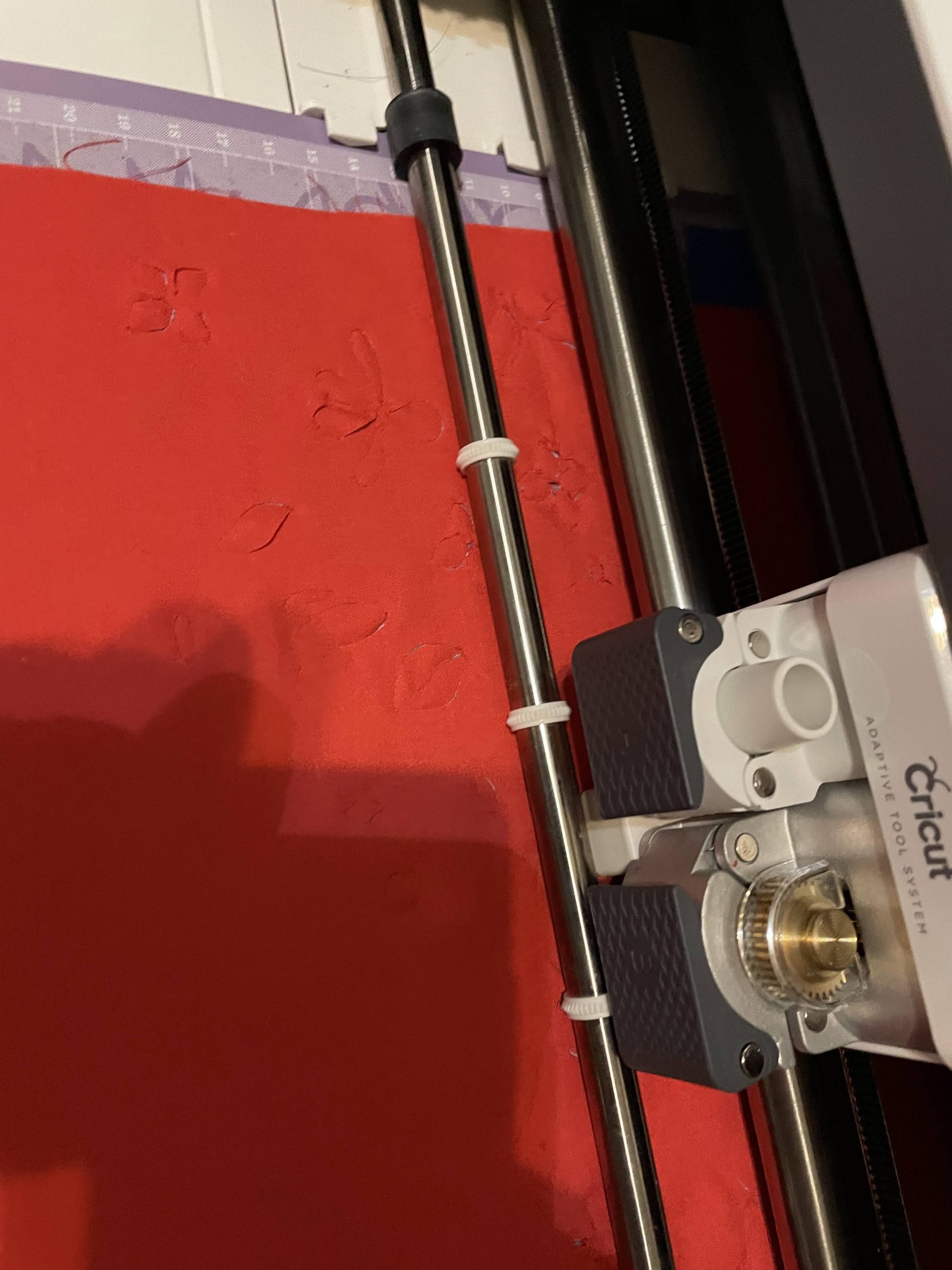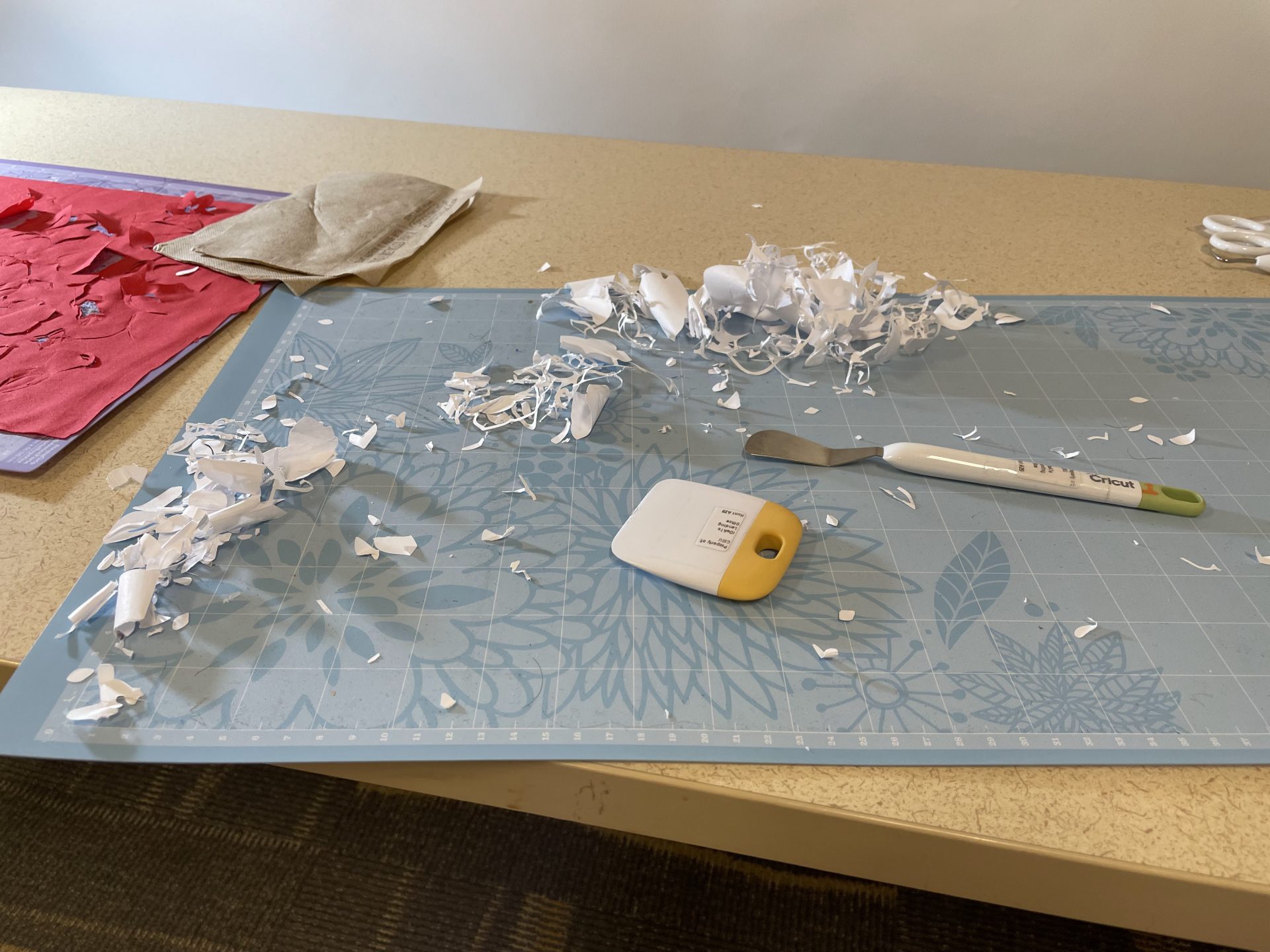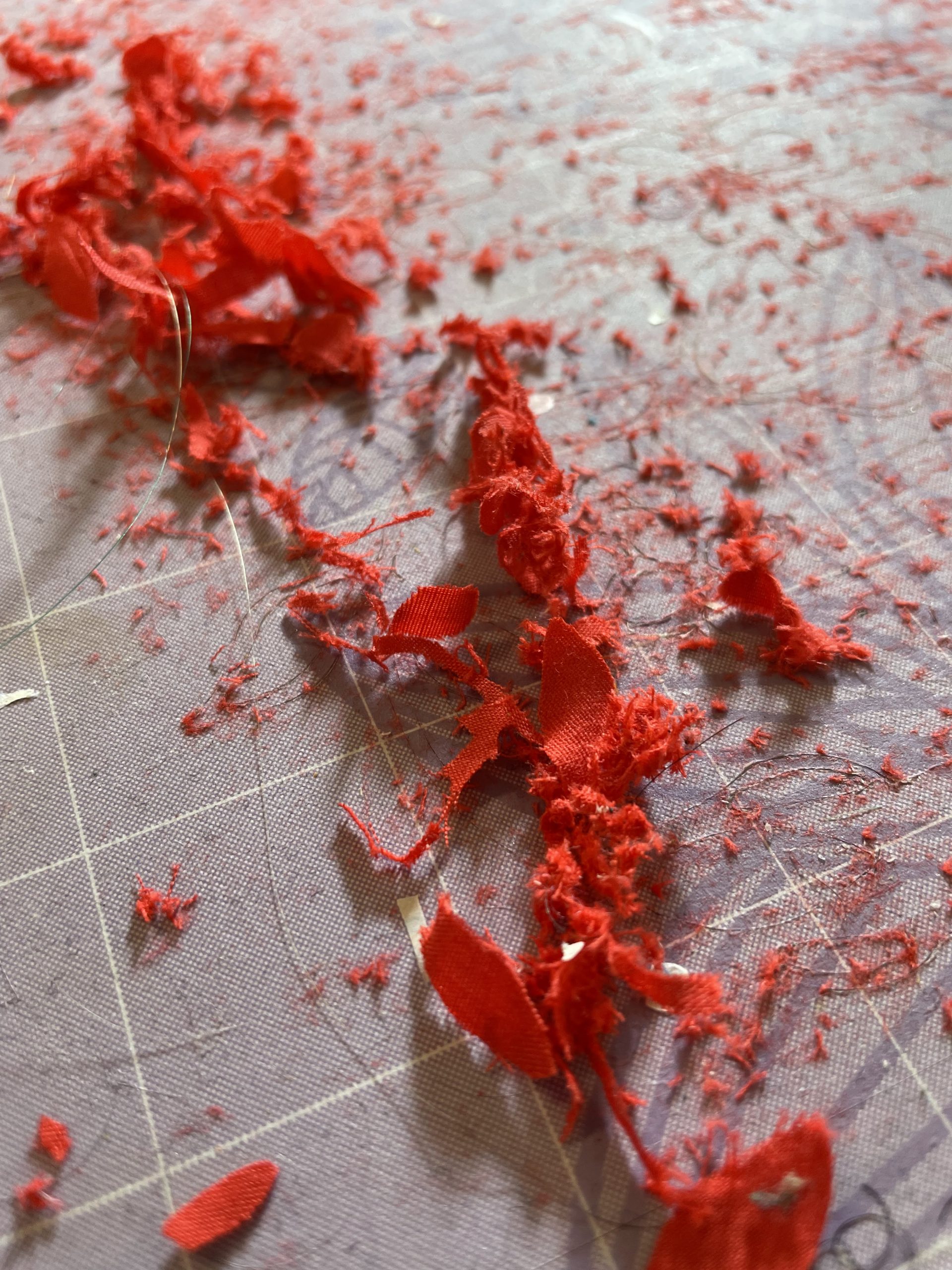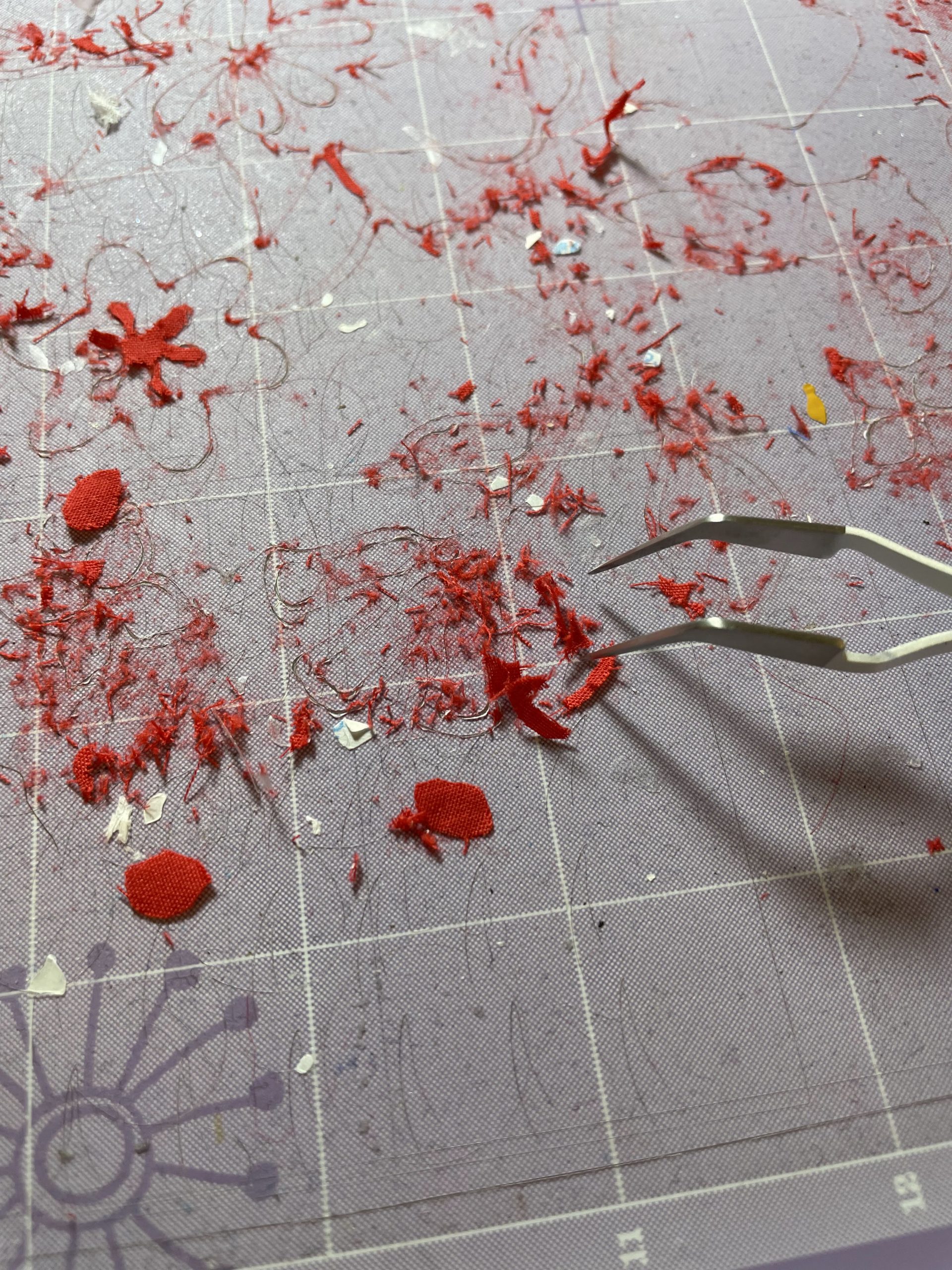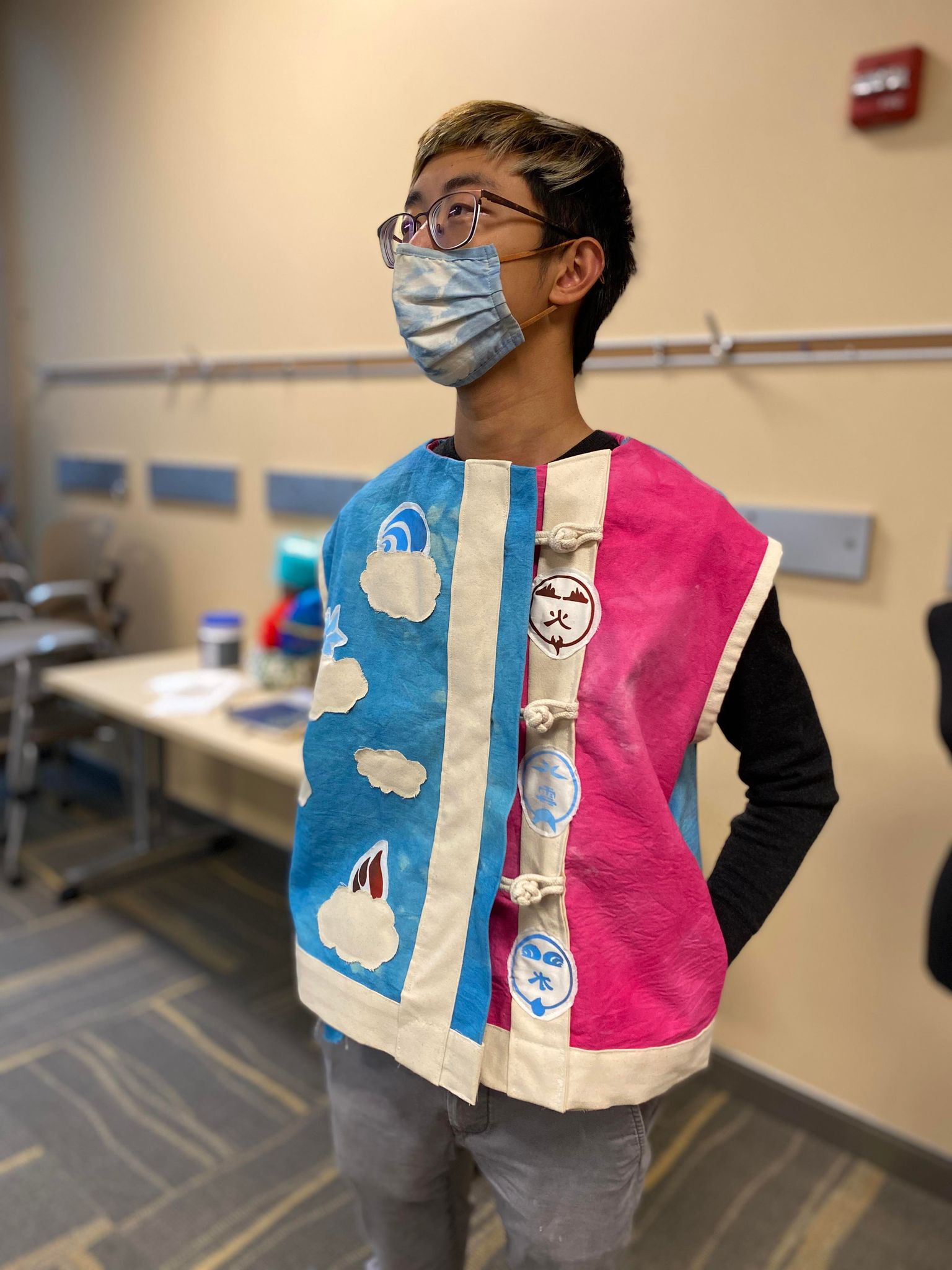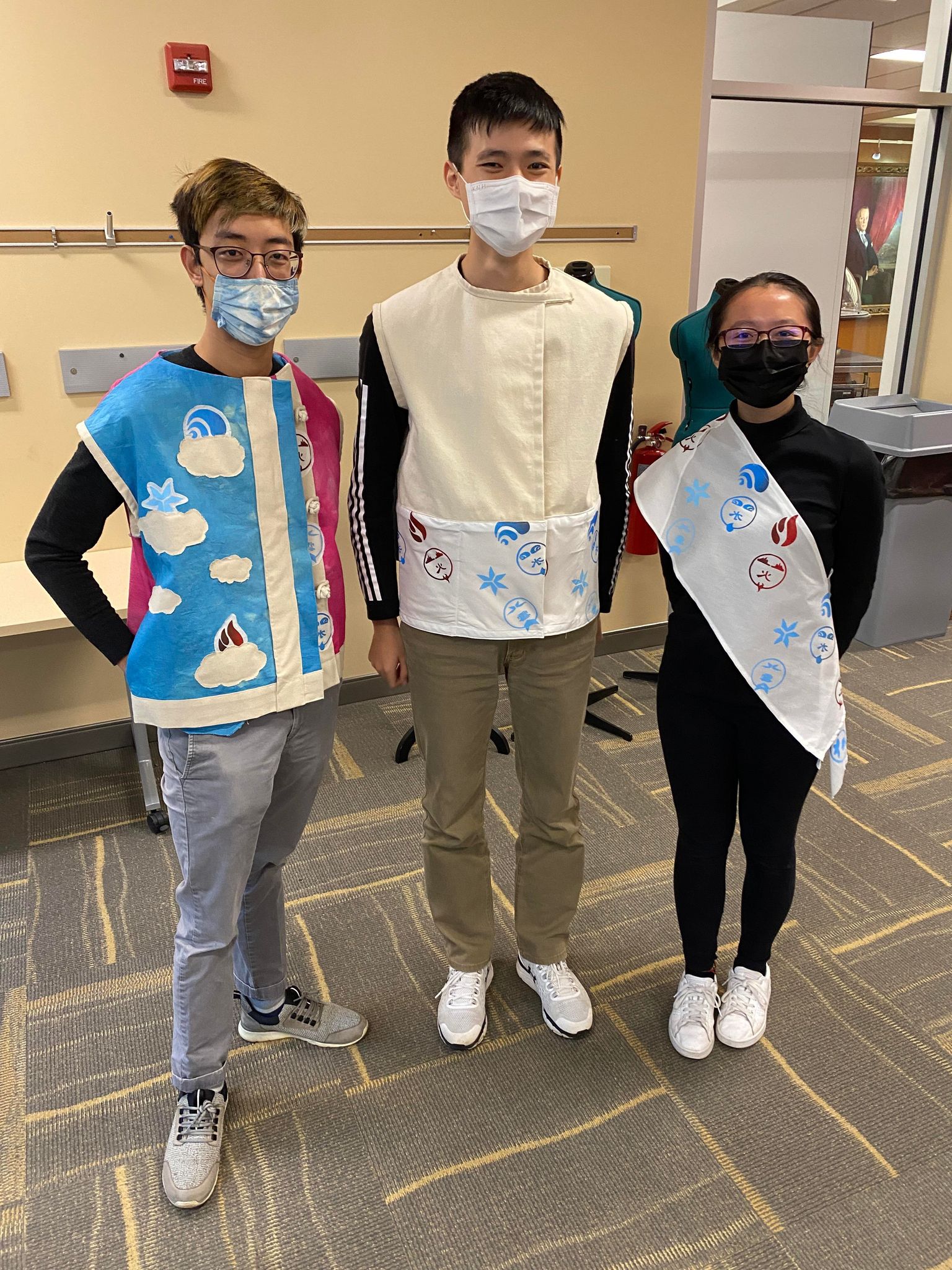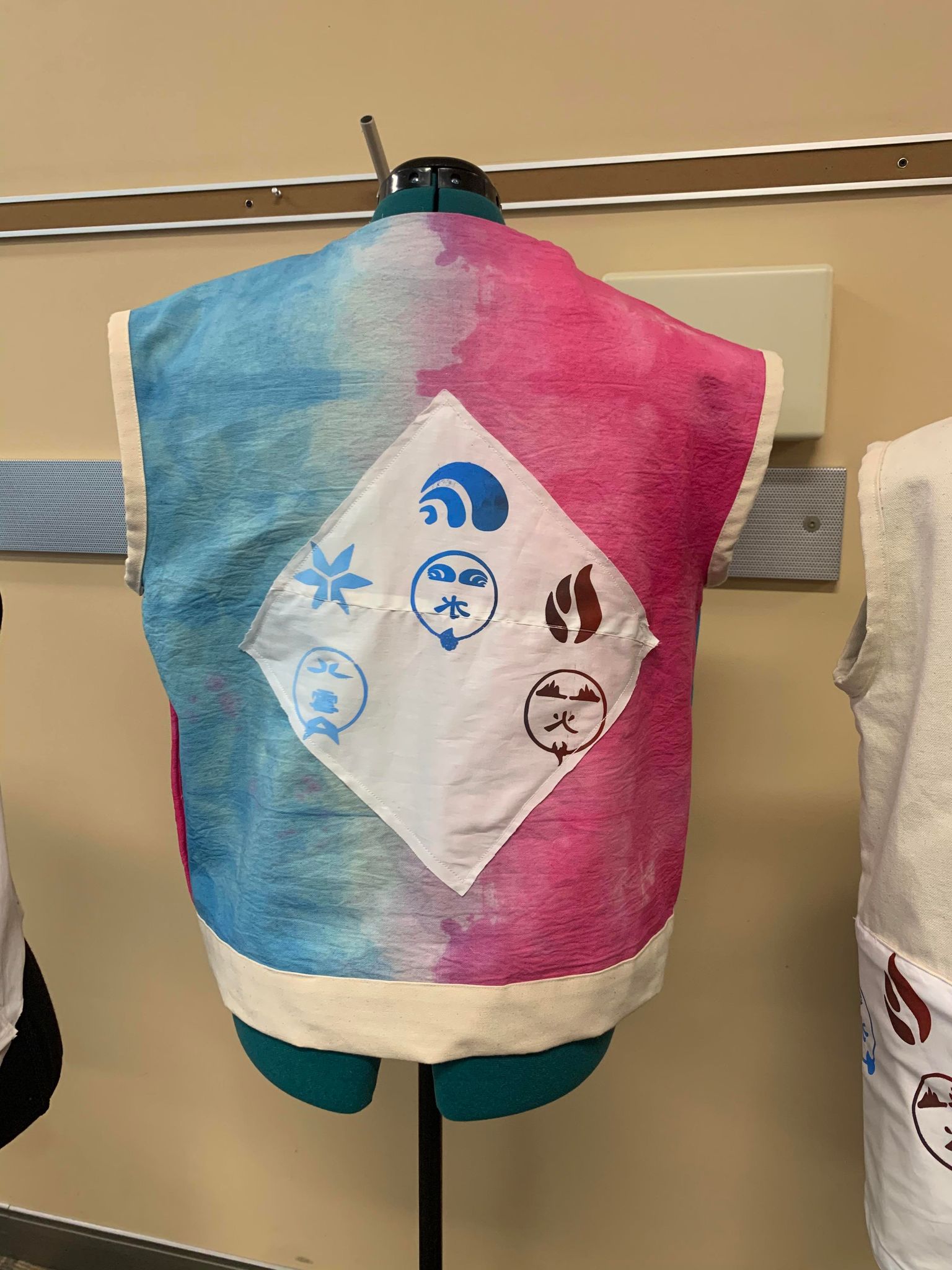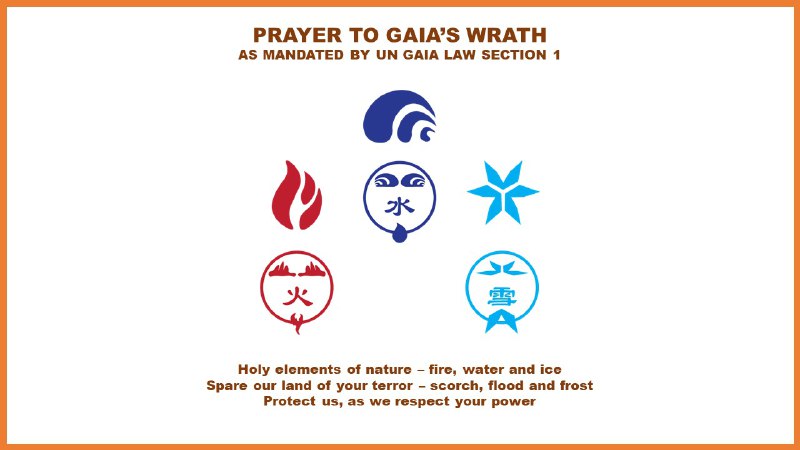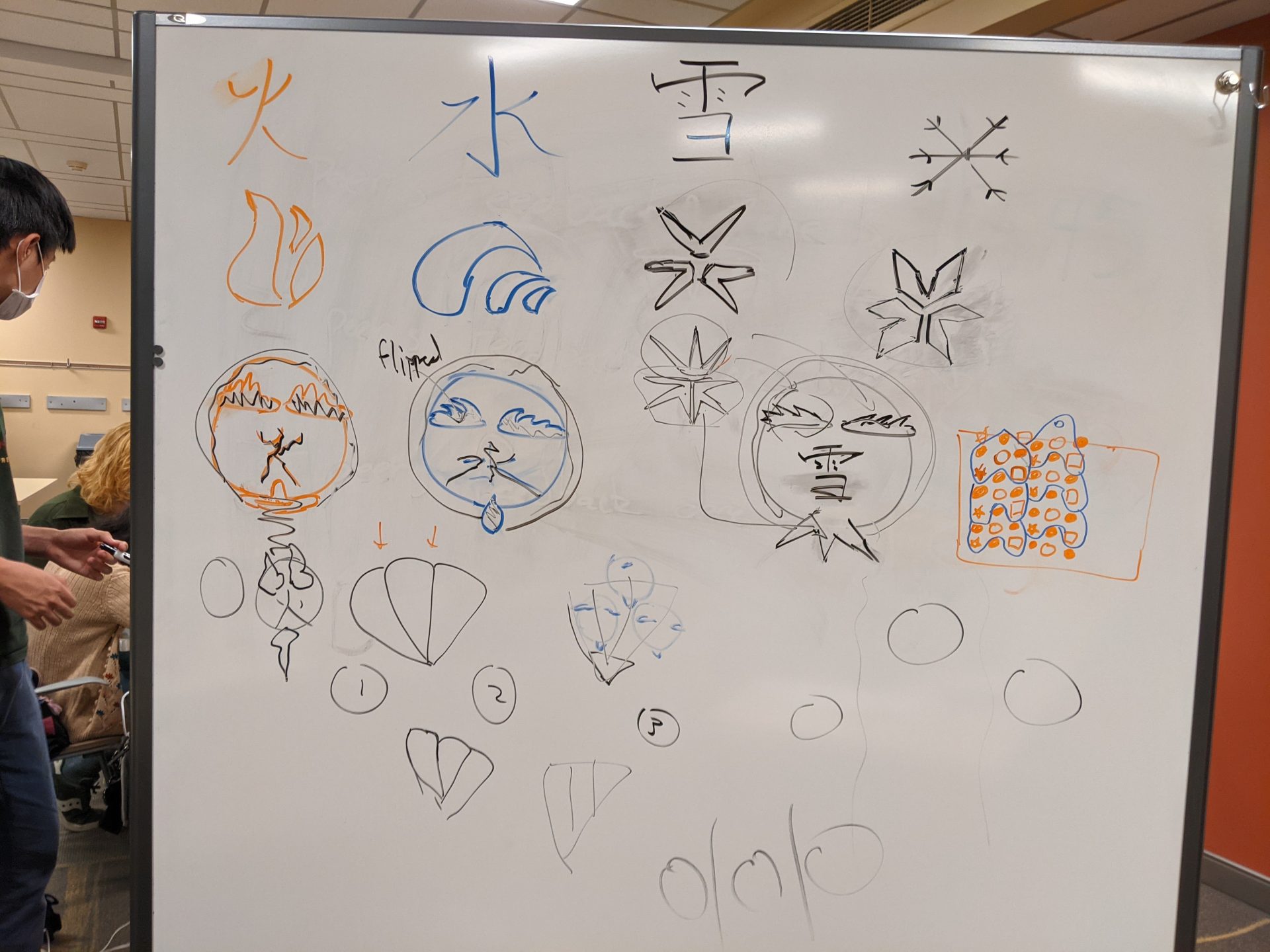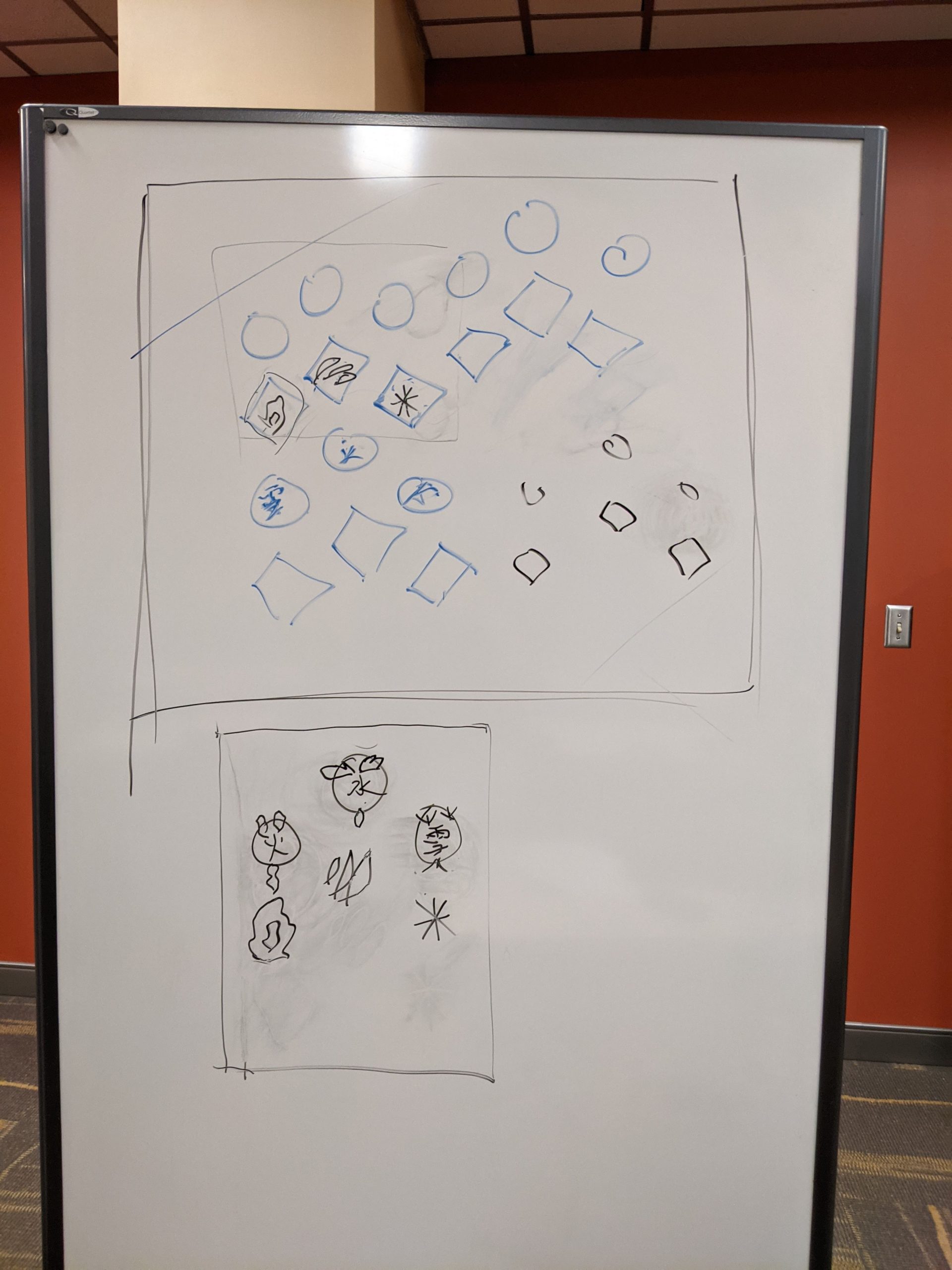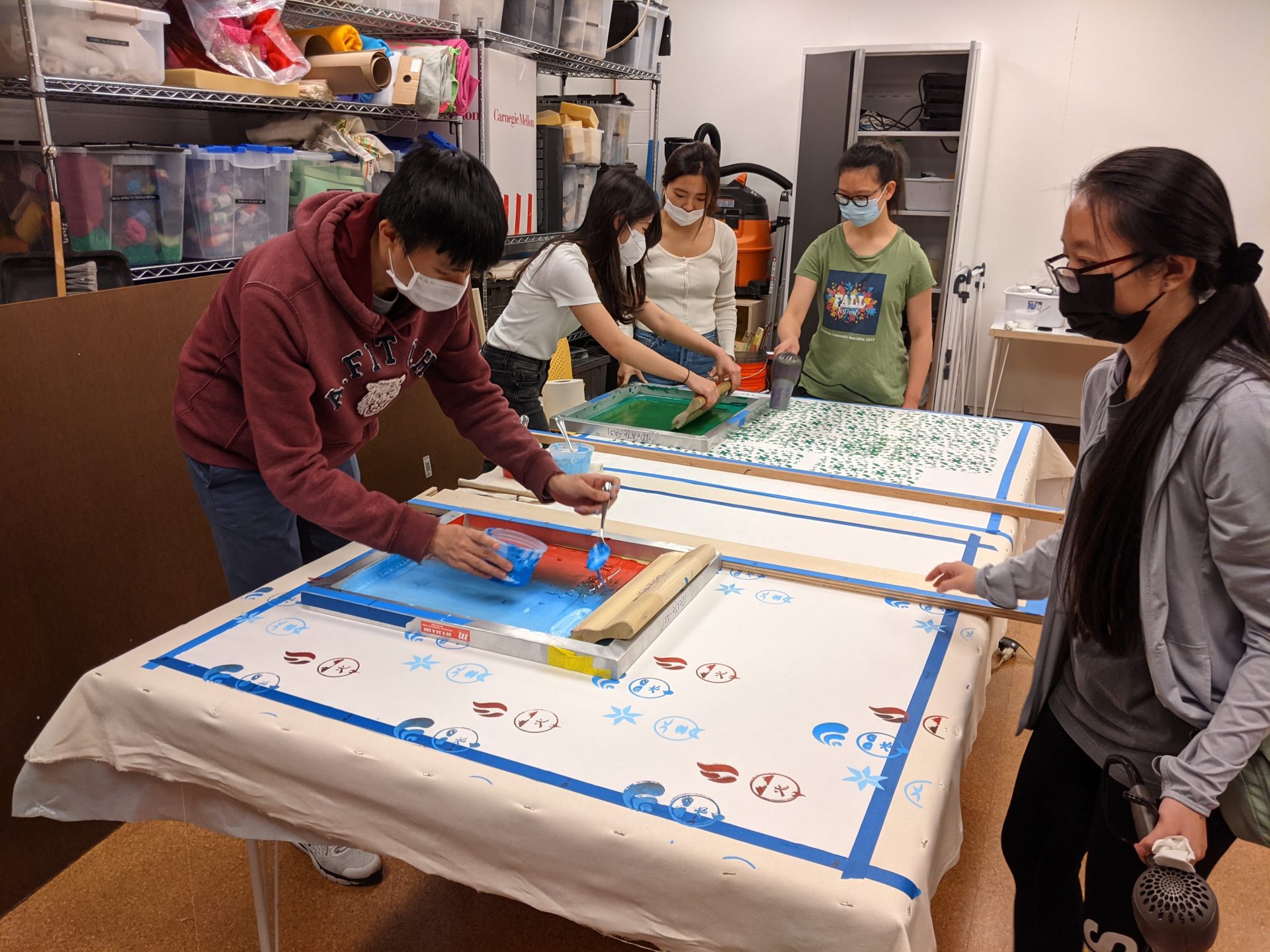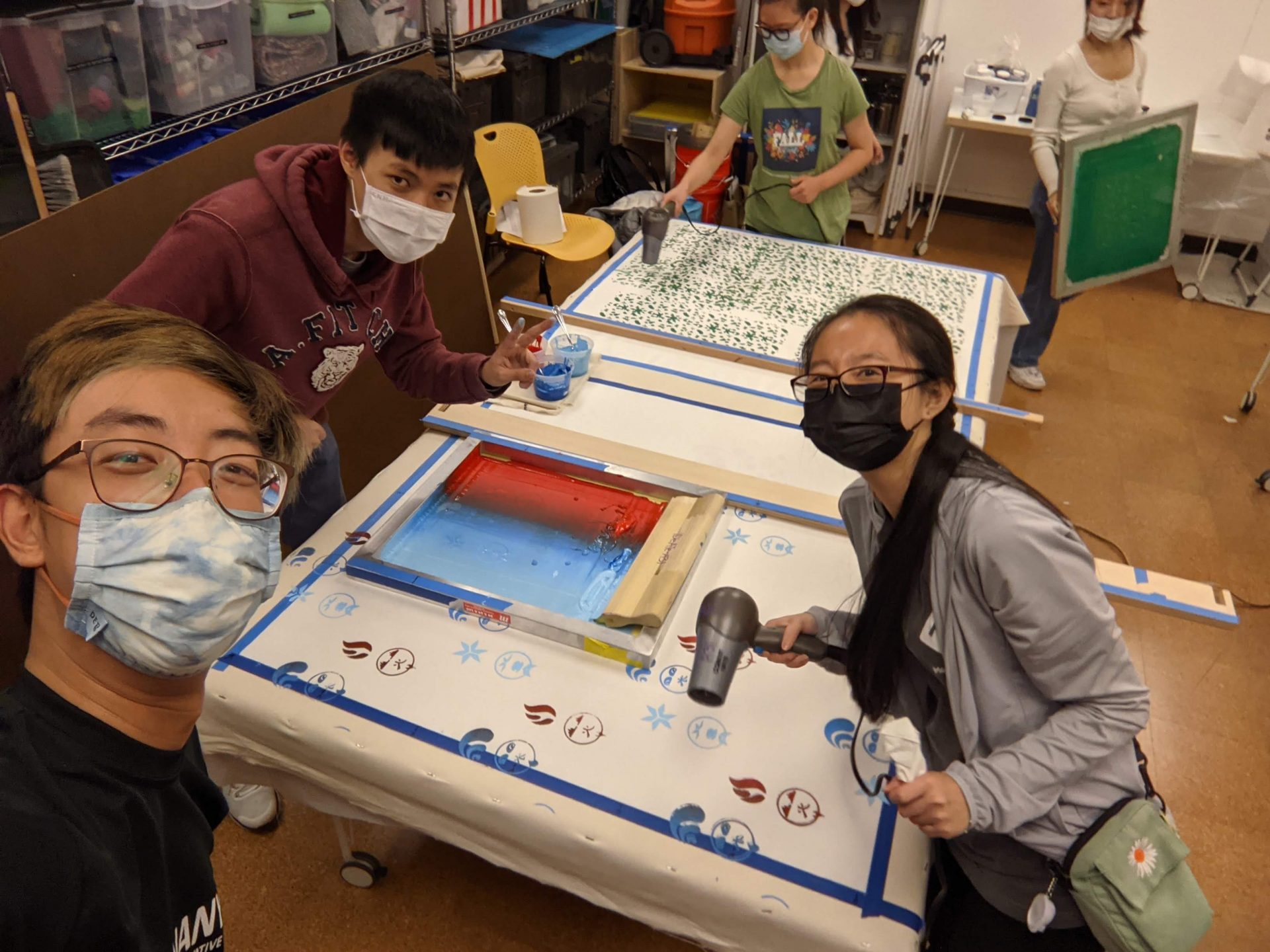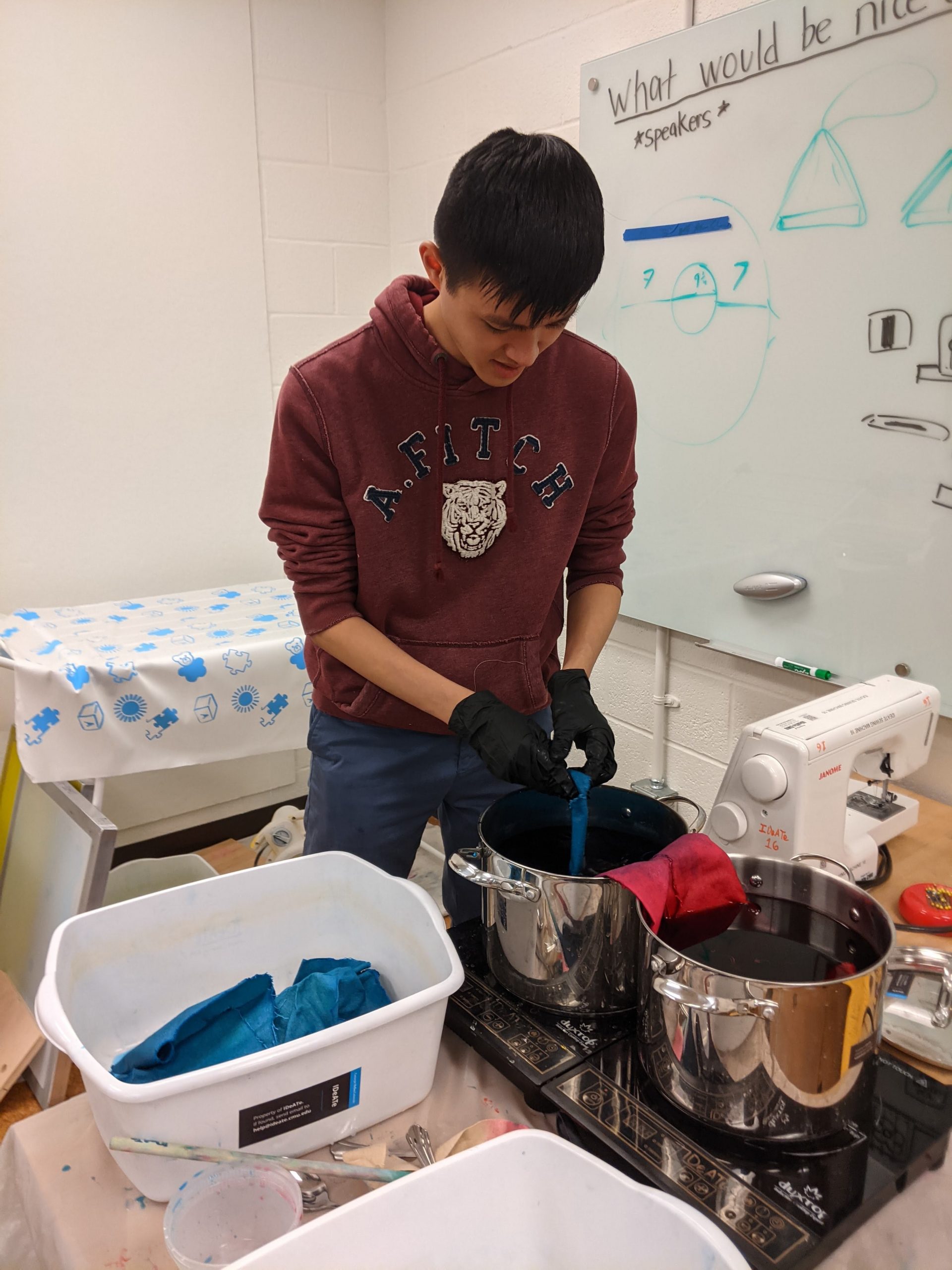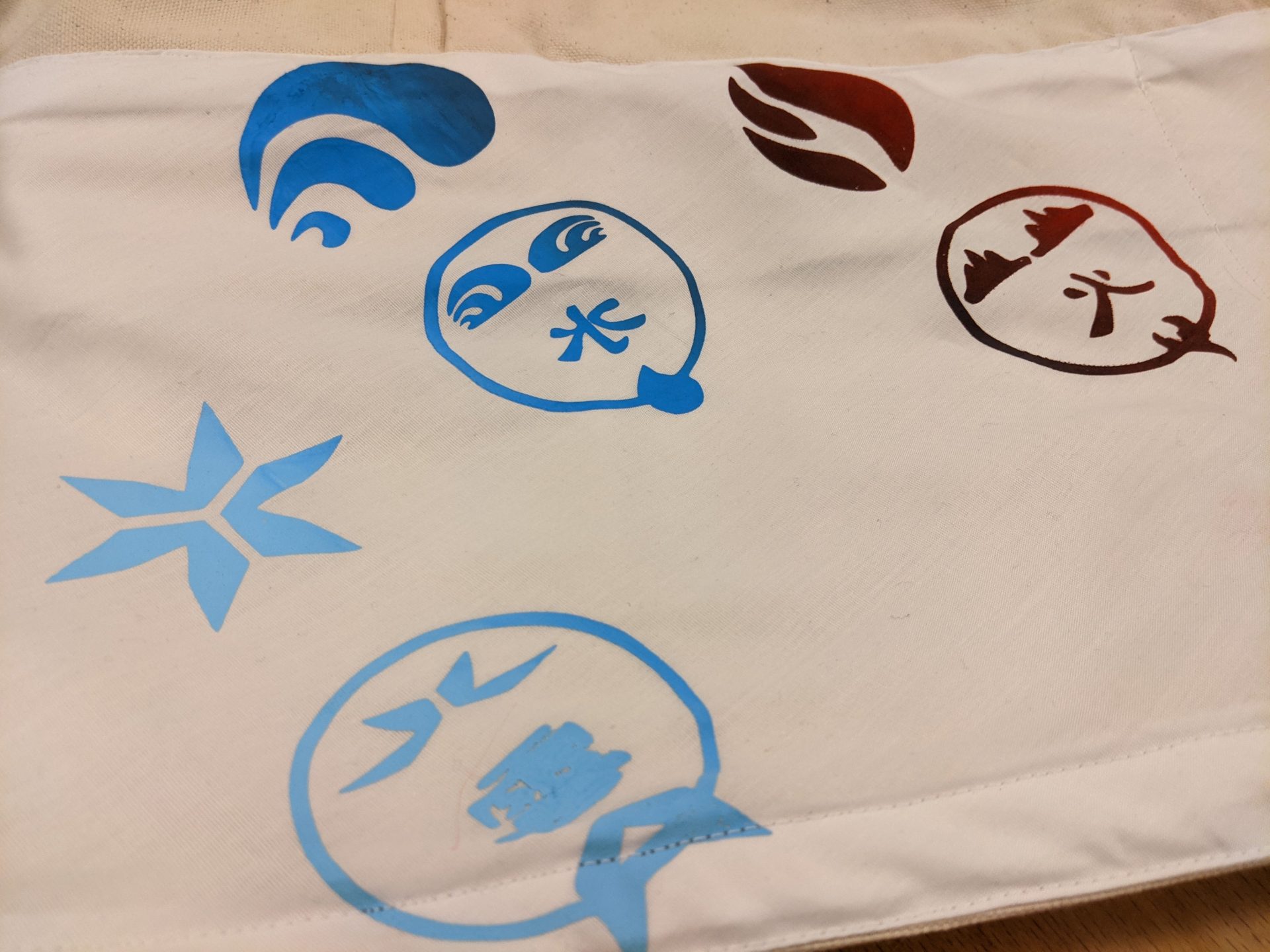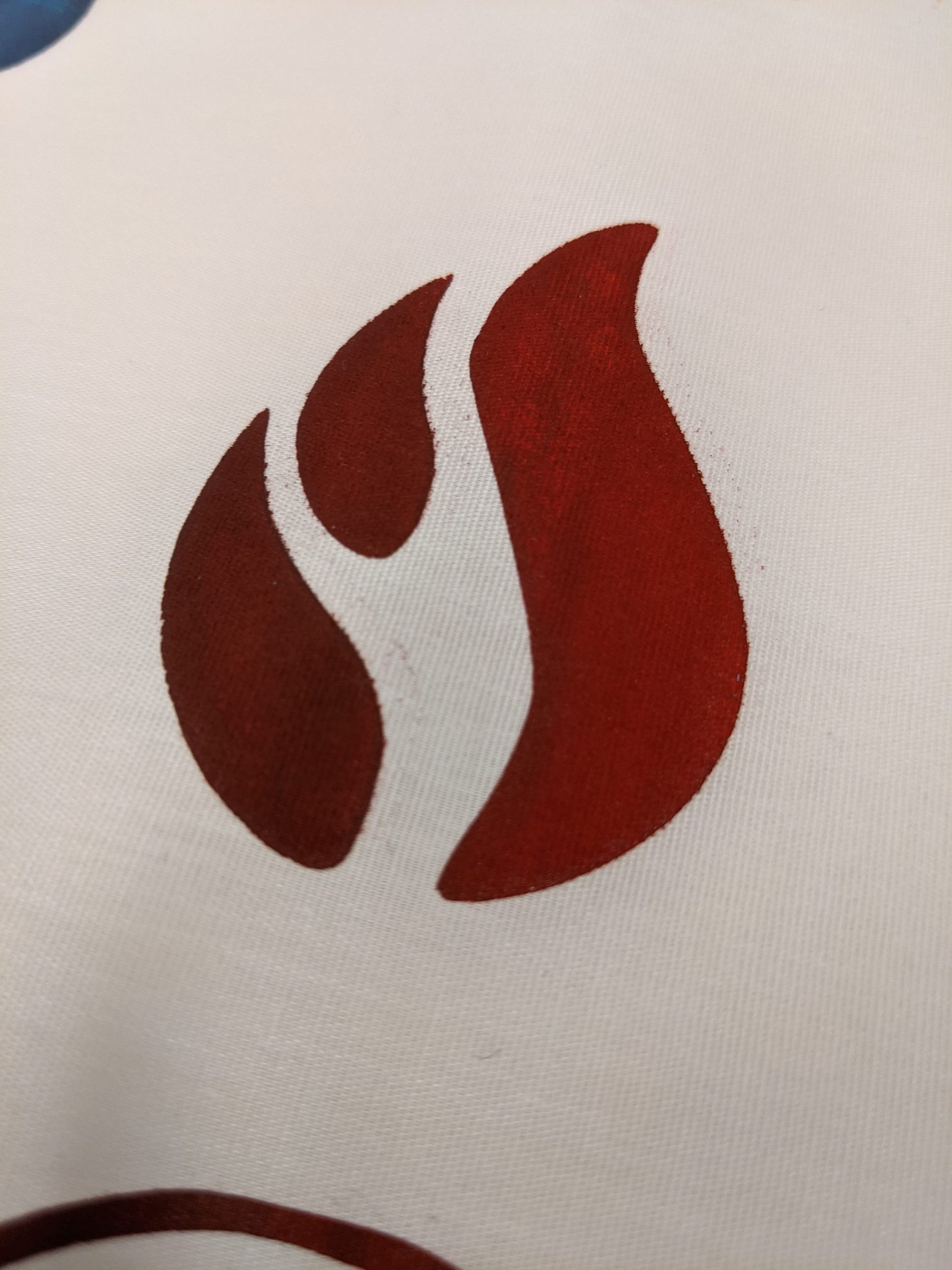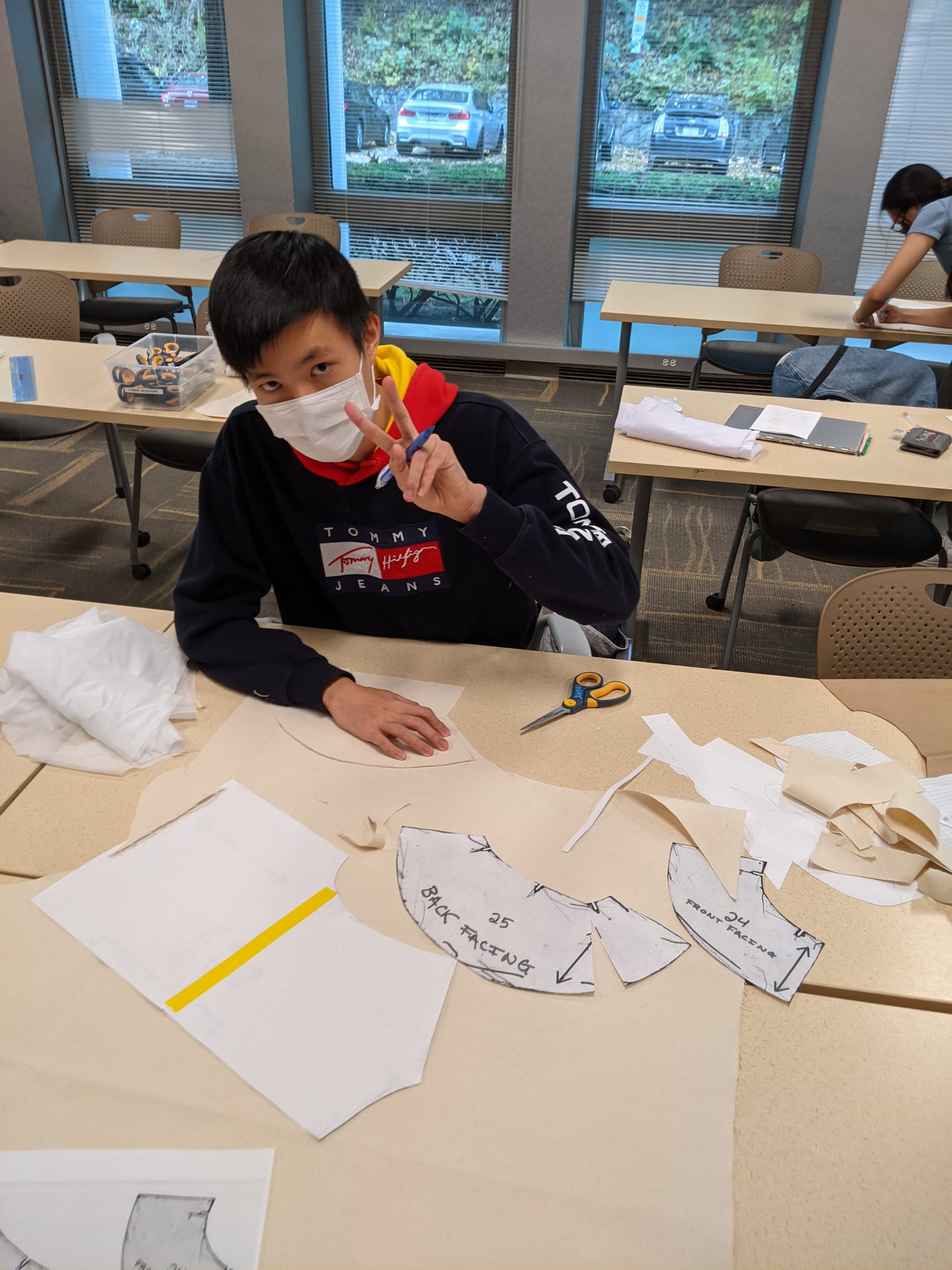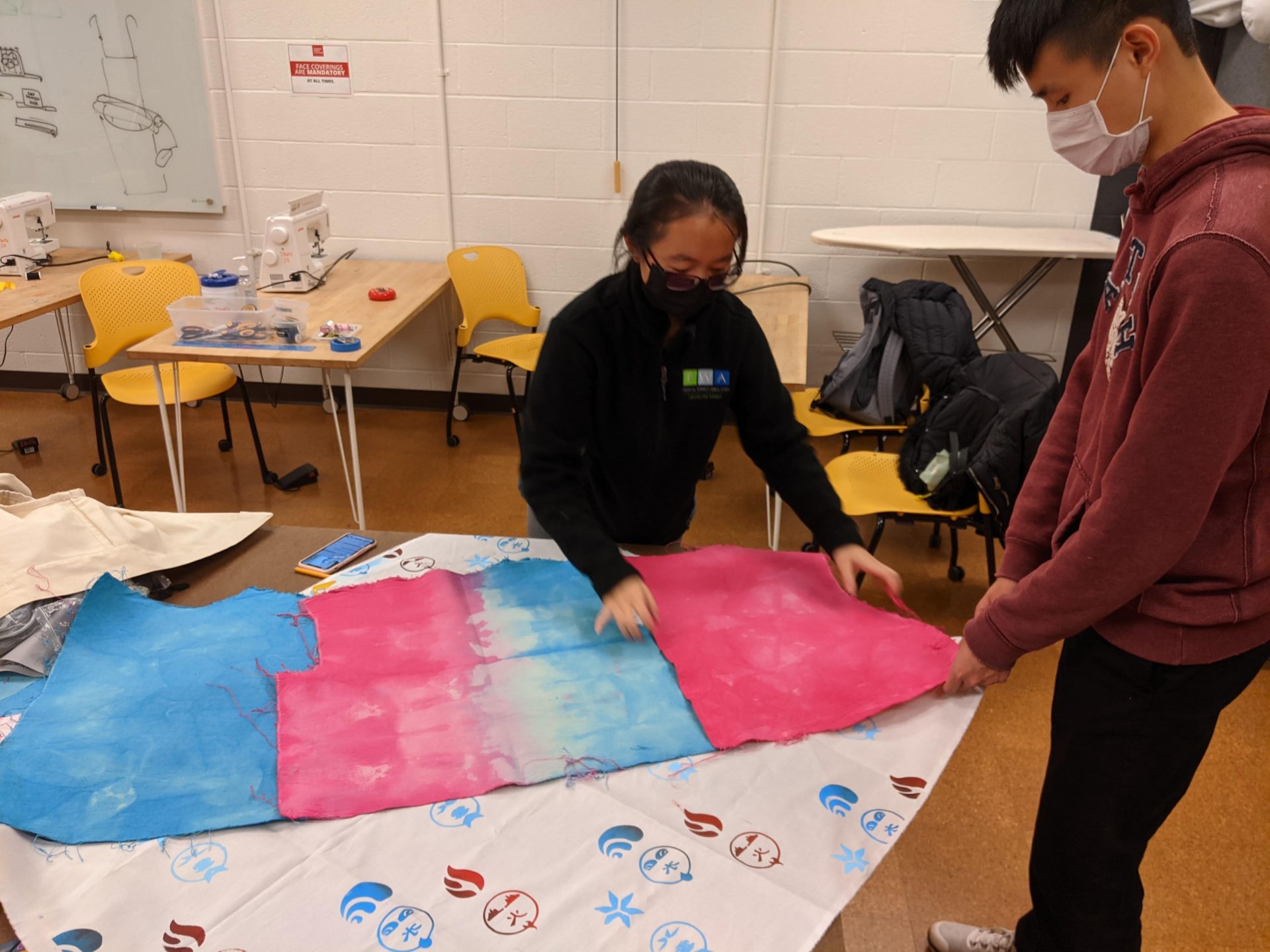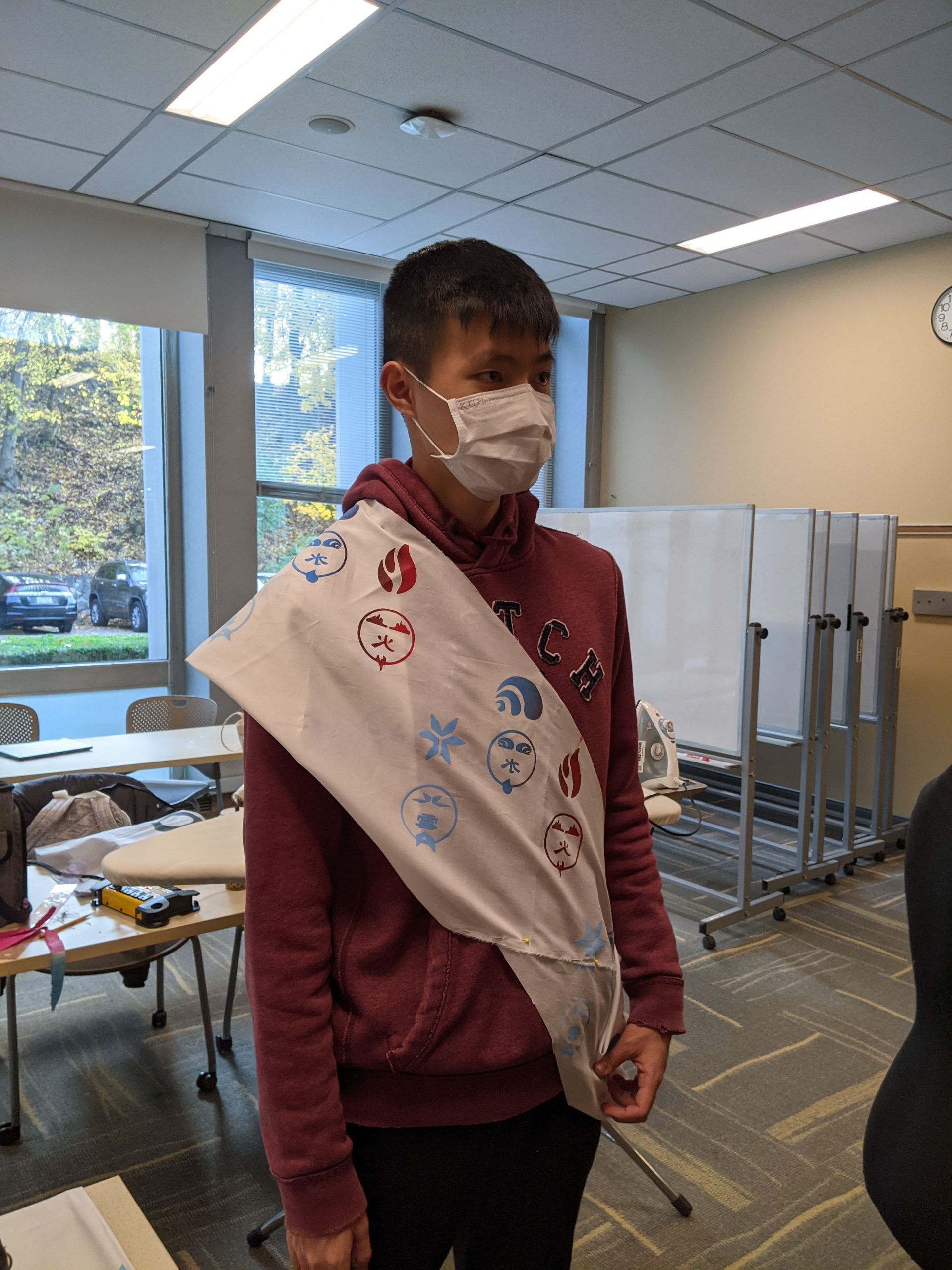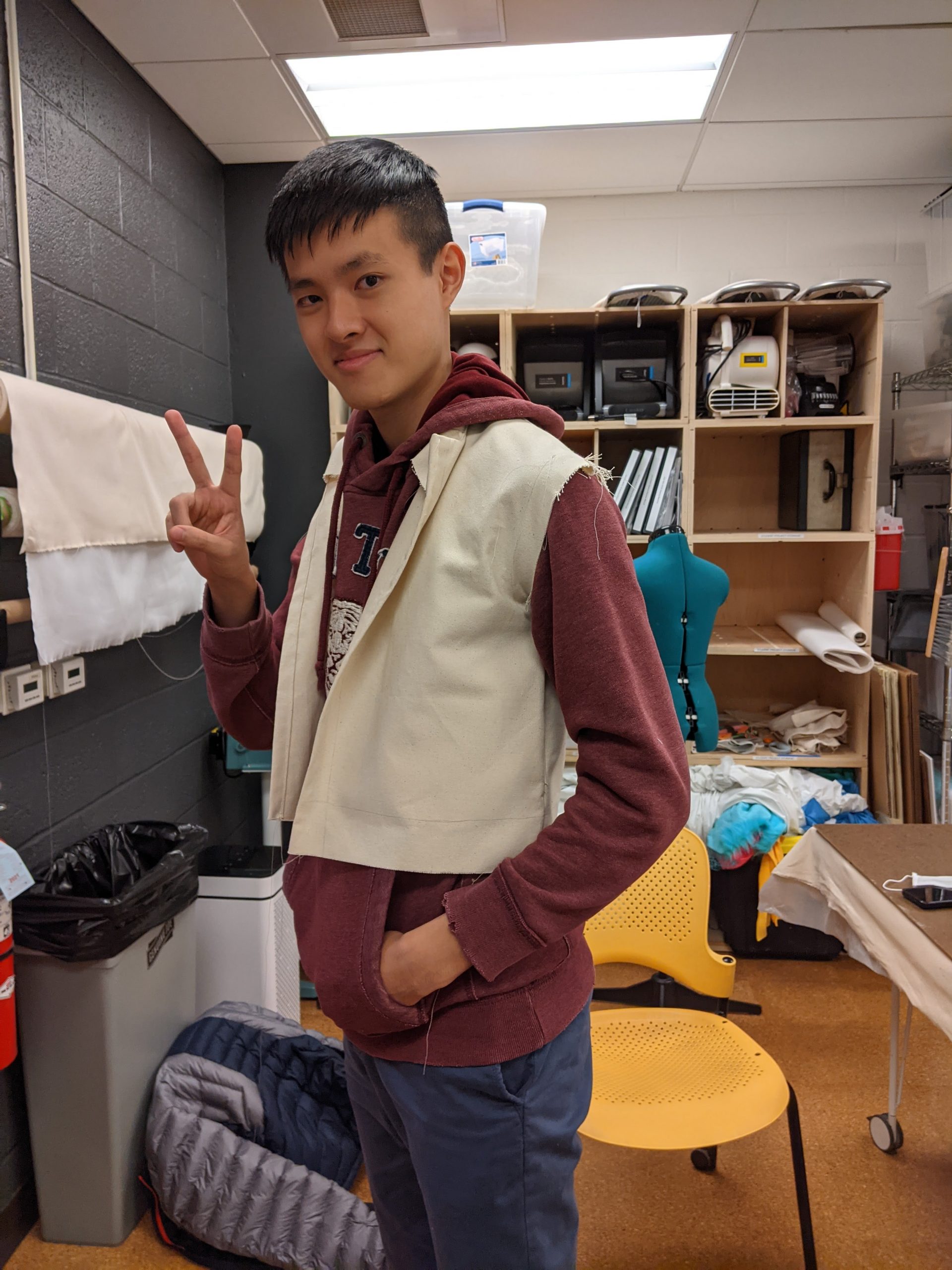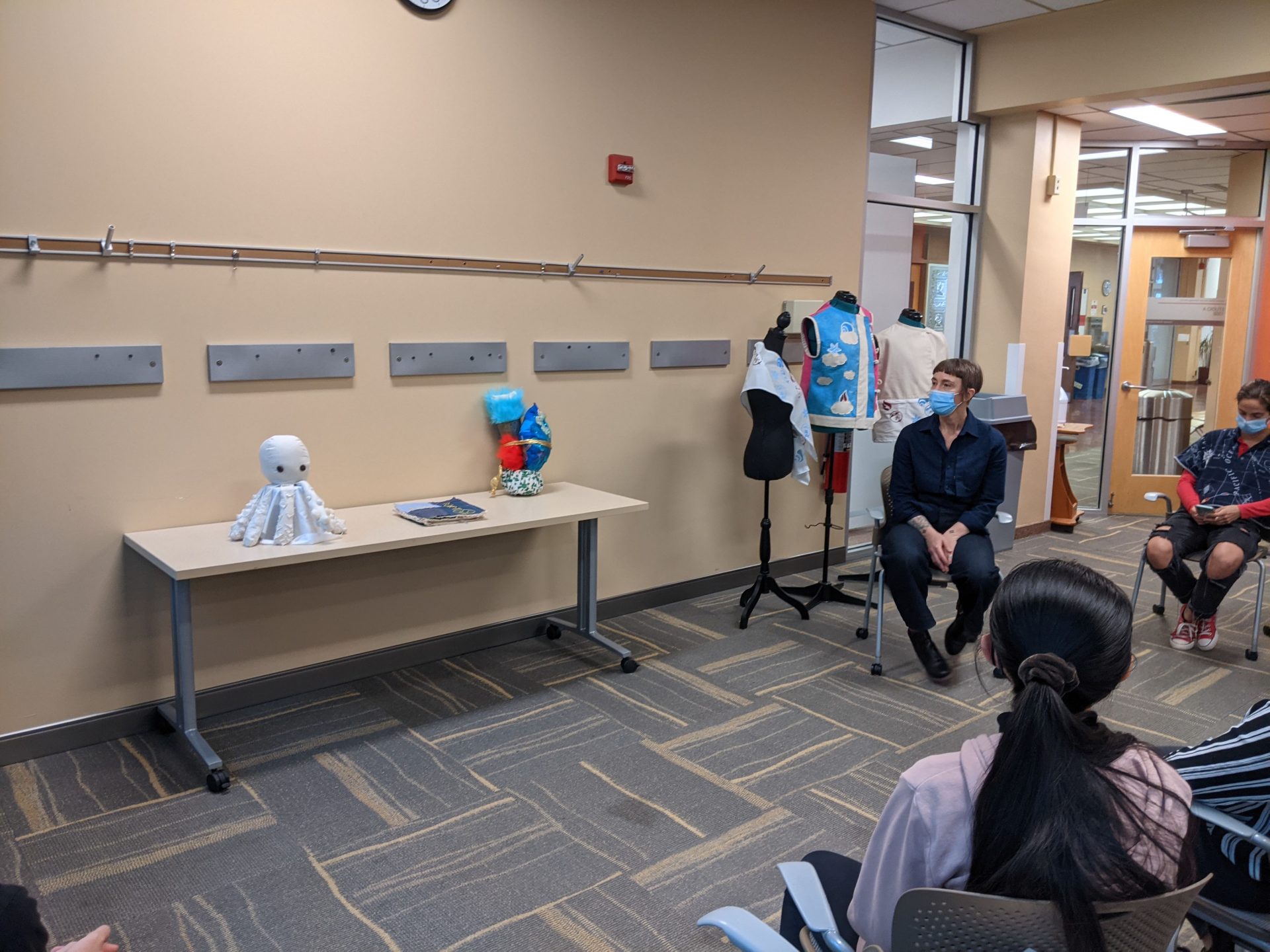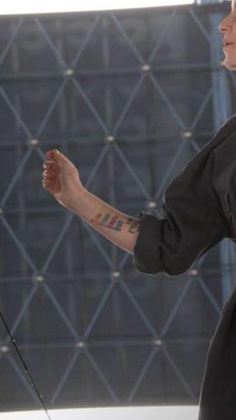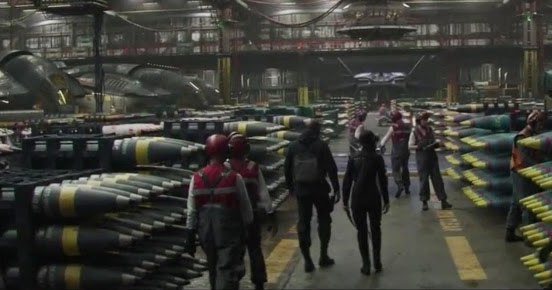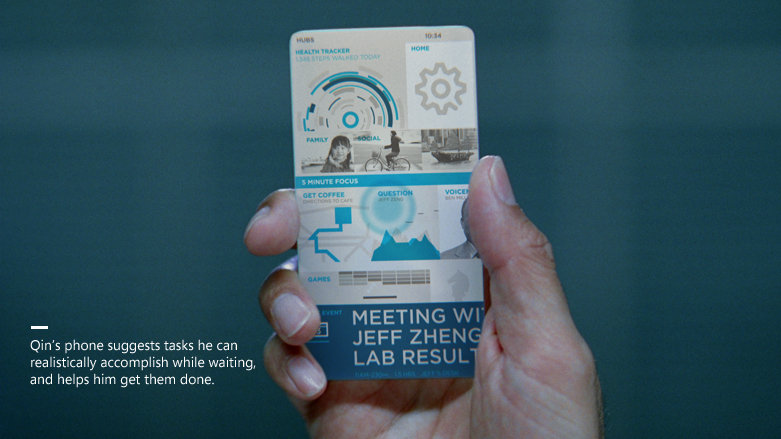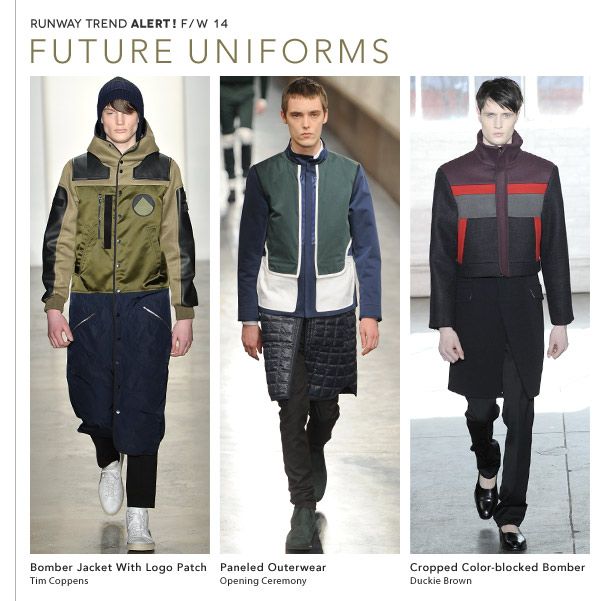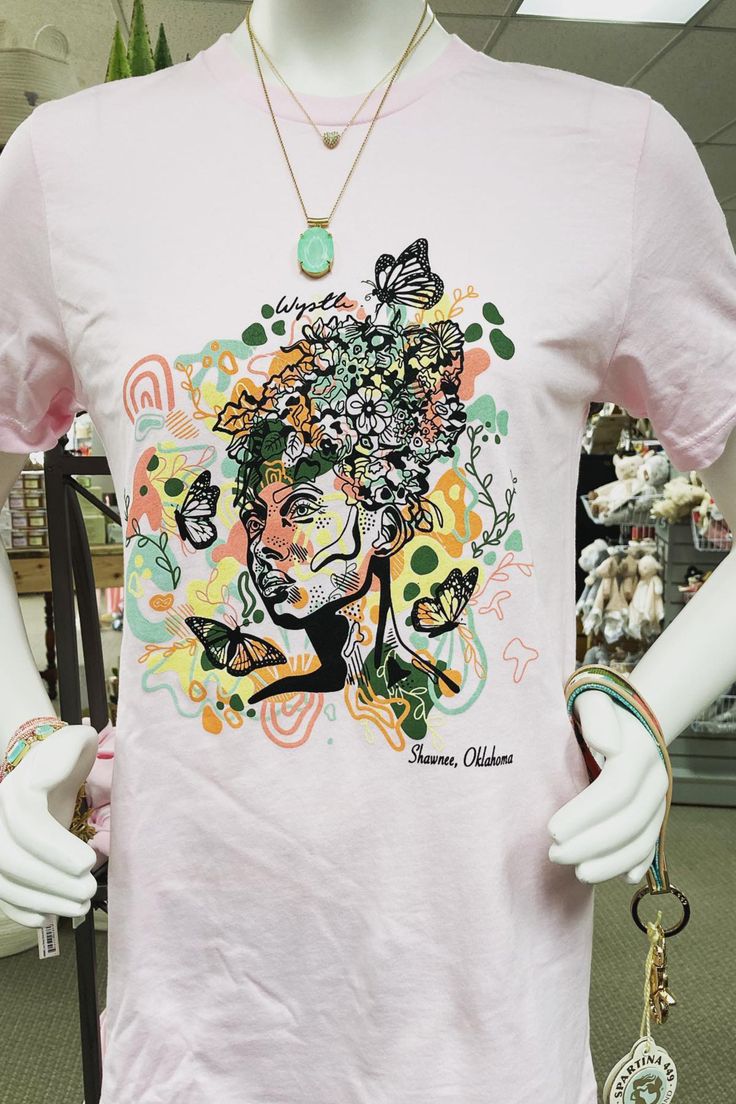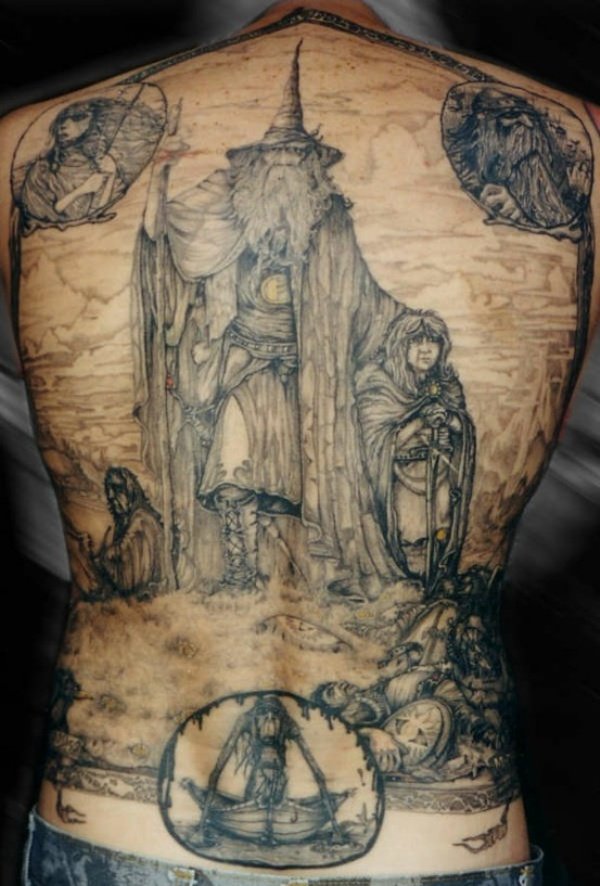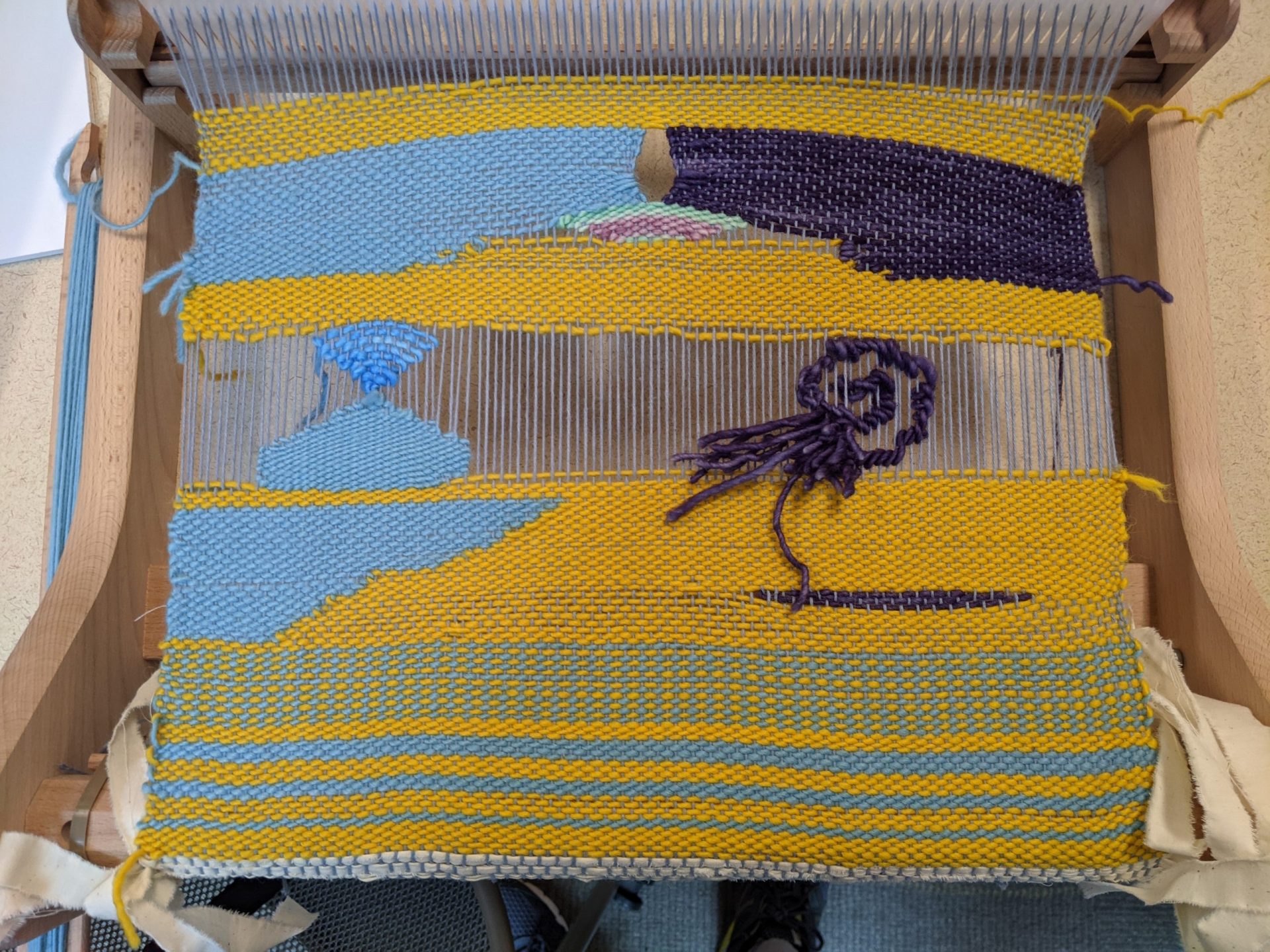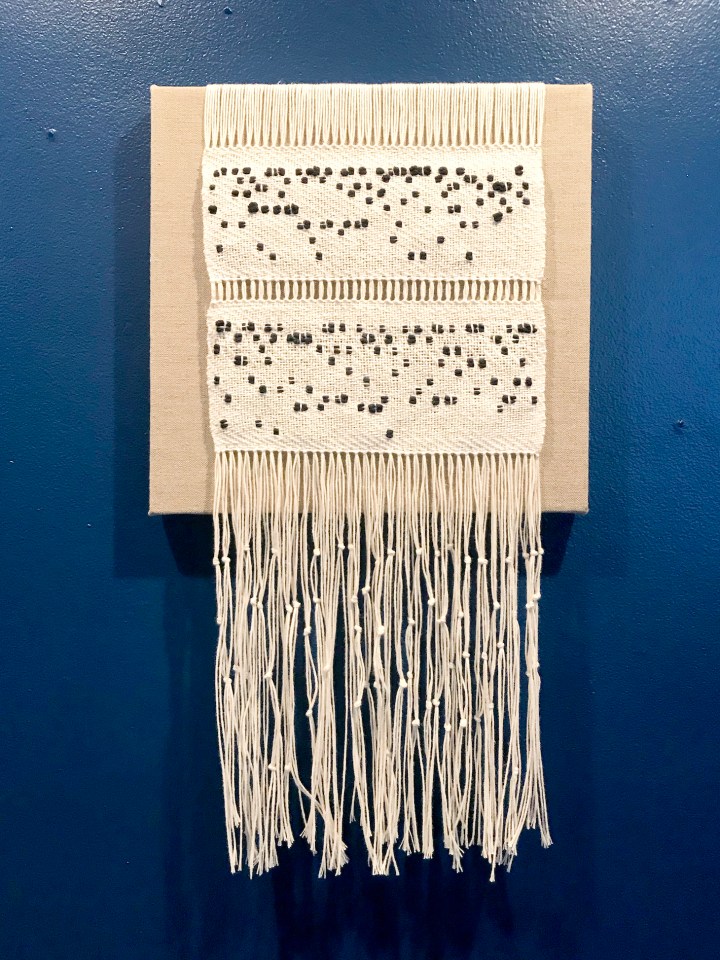
Machine-Cut Cotton
Various Cotton Fabrics, Cricut Maker
Ron Chew, 2021
A fine yet rough trim of thin red fabric lays atop a lavender cutting board. Careful cuts of thin stems trace towards blooms of flowers in a seemingly random pattern. Bits and pieces of this cutting is torn and macerated, with fibers mashed into the adhesive backing underneath. A lone lamp illuminates the fabric in hues of red and blue, turning the fabric into shades of crimson and violet. It sits alongside a paper cousin, similarly neatly trimmed, but also as fragile and trapped in the same dilemma.
Intended Effects
The initial intention was to develop a sculpture that would involve two cordless office phone handsets. The phones would signify the connection between two locations: Pittsburgh and Singapore, that I experience as an international student, and the communication that I have between people of these two locations.
I would have a representation of maps of these two locations on the surface between these two upright phones, and additionally suspended lace of flowers (from the Singapore Airlines stewardess batik-style uniform), and perhaps of a native-american style print of triangles, symbols and other patterns.
Lighting from either under or above the sculpture would play with color theory to either emphasize or deemphasize the color of different items, showing changes in the communication.
Challenges
The initial idea was to implement the flower lace as a computer-embroidered element on dissolvable stabilizer backing, so that the lace can be clear and see through. The nature of the two threads of the embroidery would also allow each side of the lace to have a unique color. Using the vectorized pattern in Ink/Stitch did not work as it was too complex, however pEmbrioder worked just fine on the bitmapped image. A successful test was executed on the Husqvarna Viking Jade 35 machine, however I had realized too late that all the required stabilizer had been used up by other projects.
Instead, I pivoted to utilizing the Cricut Maker machine cutter to produce this element. This however proved to have its own challenges. The rotary cutter had to be used instead of the fine point blade for the cricut in order to work with the fabric, since the regular blade would drag the fabric off the adhesive and make a mess. However, the rotary cutter mode is much slower (by about 4x the amount of time) and sometimes would yield gaps in the cutting.
While using the machine cutter gave more space for the pattern to be extended, the original stems in the print were much too thin to produce a sturdy result when cut out. While the paper cutouts still looked sturdy, much of these points in the cotton fabric started to rip during the cutting. Additionally, it was not possible to remove a contiguous pattern without it tearing at these fragile points.
Successes
Due to these issues, I had to present the work as incomplete, still on the Cricut Board and in separate elements. However, I was still able to test ideas about the concept, including playing with elements of the lighting, shadow and shapes.
I appreciated how my fellow makers and students found thematic elements in the work despite its state, including ideas about being bonded and stuck to roots or culture, nature being messy instead of being literally clear-cut, and how we communicate with patterns and appliances. The exercise was certainly a good experiment to help me understand the nature of cutting fabric using a machine cutter. In a future iteration of this project, I would probably make changes to the pattern so that there are less thin and fine elements to reduce the possibility of splits and tears, and probably use a thicker piece of fabric.


